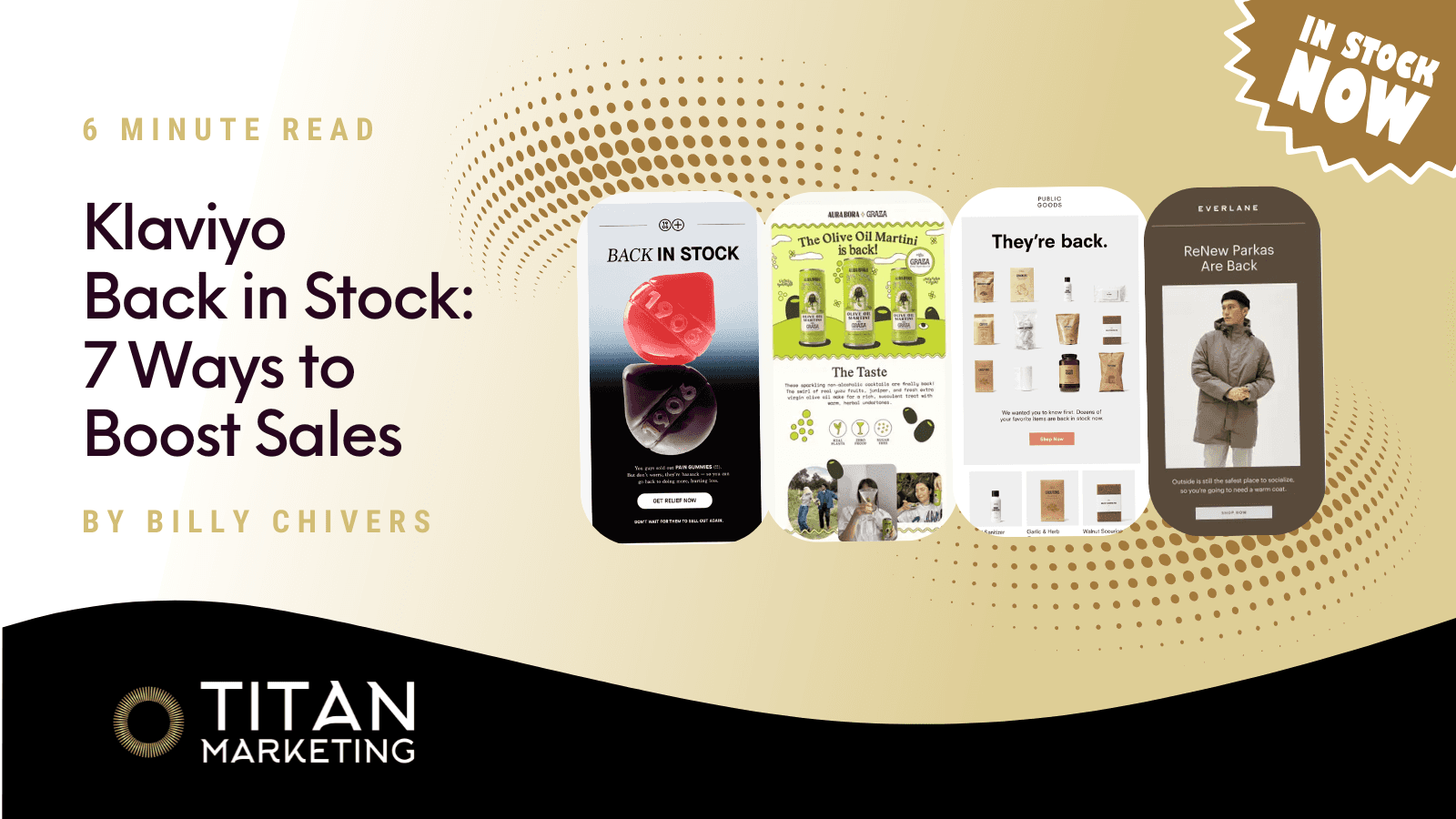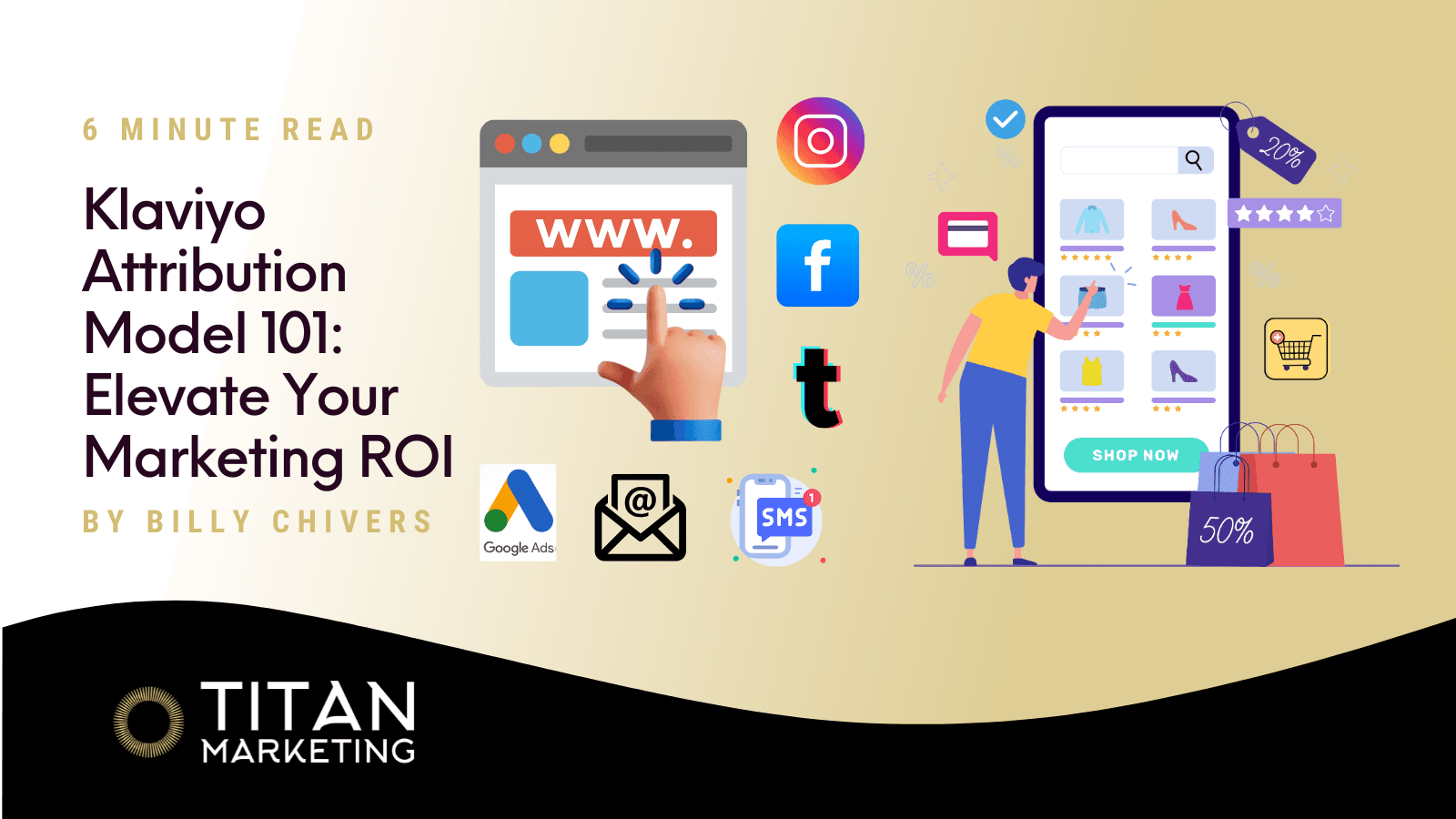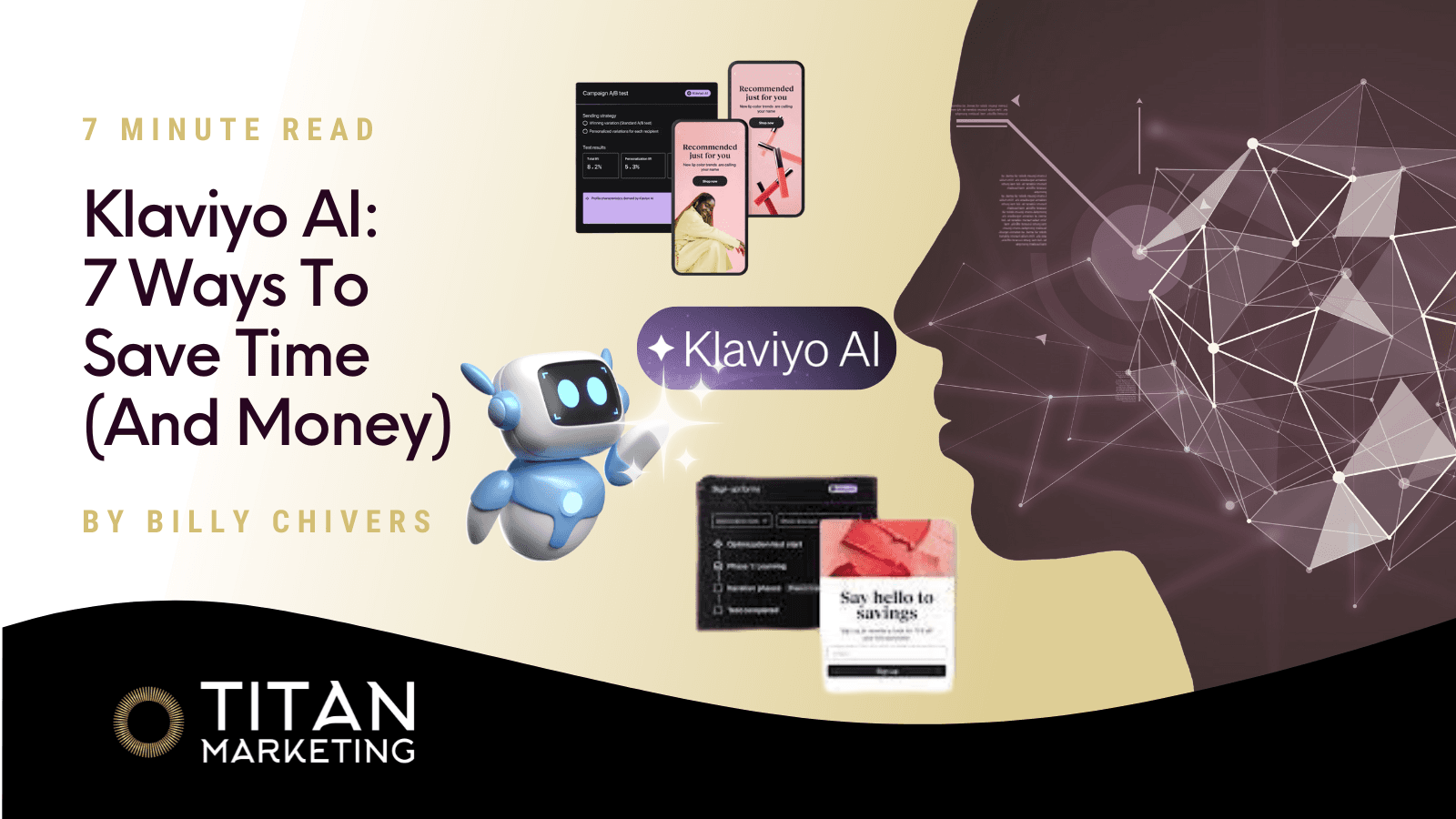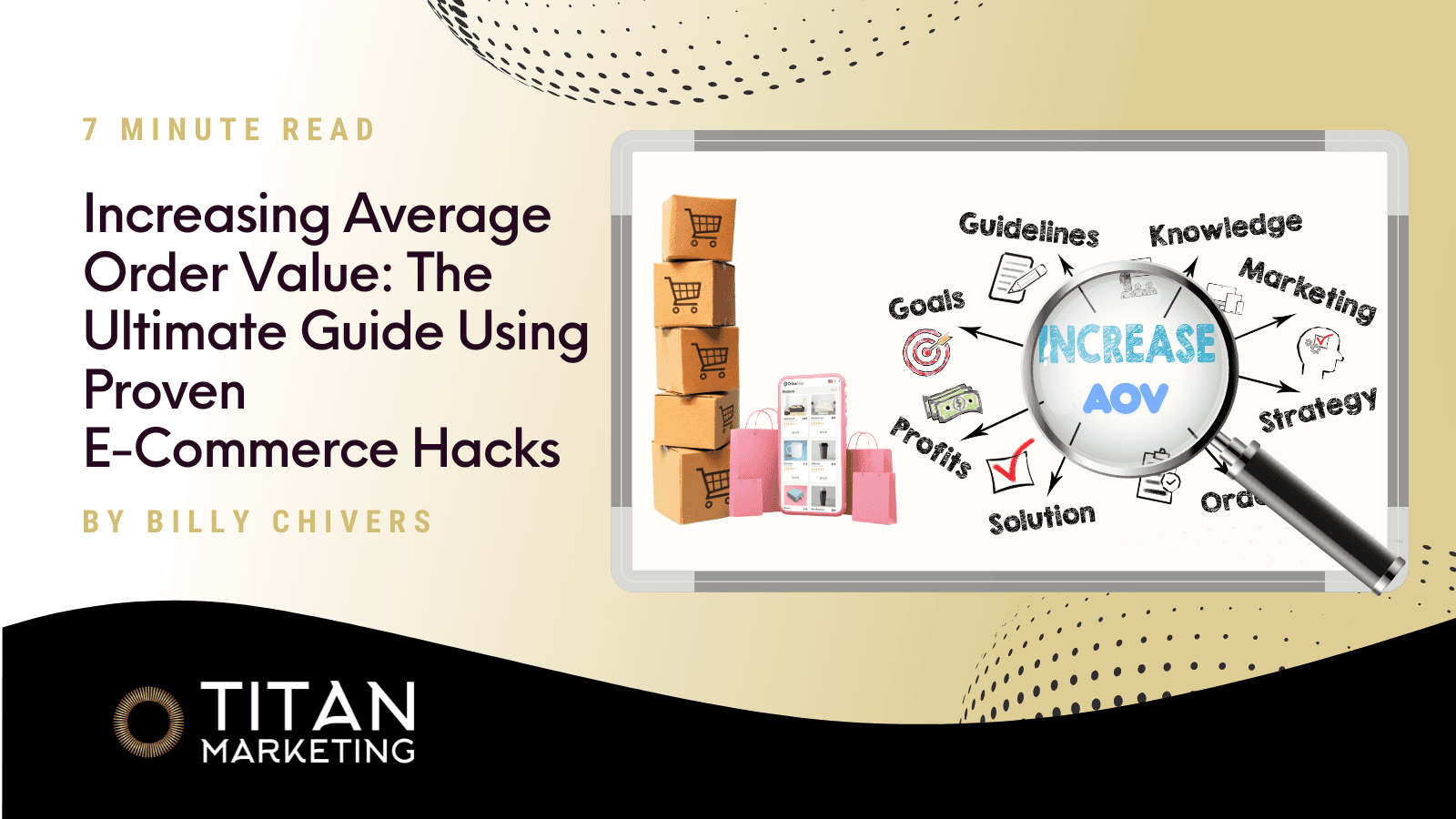
Blog
January 30, 2025
Increasing Average Order Value: The Ultimate Guide Using Proven E-Commerce Hacks

Blog
January 30, 2025
Increasing Average Order Value: The Ultimate Guide Using Proven E-Commerce Hacks

Blog
January 30, 2025
Increasing Average Order Value: The Ultimate Guide Using Proven E-Commerce Hacks
Discover how to boost your revenue without acquiring new customers! This guide shares actionable strategies, tools like Klaviyo, and insights to increase your Average Order Value (AOV) and optimise your e-commerce success.
What if you could significantly boost your revenue without spending more on customer acquisition? Increasing Average Order Value (AOV) is a game-changer for businesses aiming to get more out of their existing customer base. By encouraging customers to spend more on each transaction, you can unlock greater profitability with minimal extra effort.
In this blog, we’ll share proven strategies to help you maximise AOV. From actionable upselling and cross-selling techniques to creating irresistible bundles and leveraging tools like Klaviyo for personalised shopping experiences, this guide is packed with tips you can implement today.
Whether you’re focused on improving customer retention, simplifying your marketing efforts, or driving long-term growth, you’ll discover practical insights to transform your e-commerce revenue strategy.
Section 1: Why Increasing Average Order Value Matters
In e-commerce, success isn’t just about acquiring new customers, it’s about maximising the value of each transaction. Average Order Value (AOV) plays a vital role in driving revenue growth while reducing acquisition costs and ensuring long-term profitability.
Defining Average Order Value (AOV):
AOV measures the average amount a customer spends per order and is calculated as:
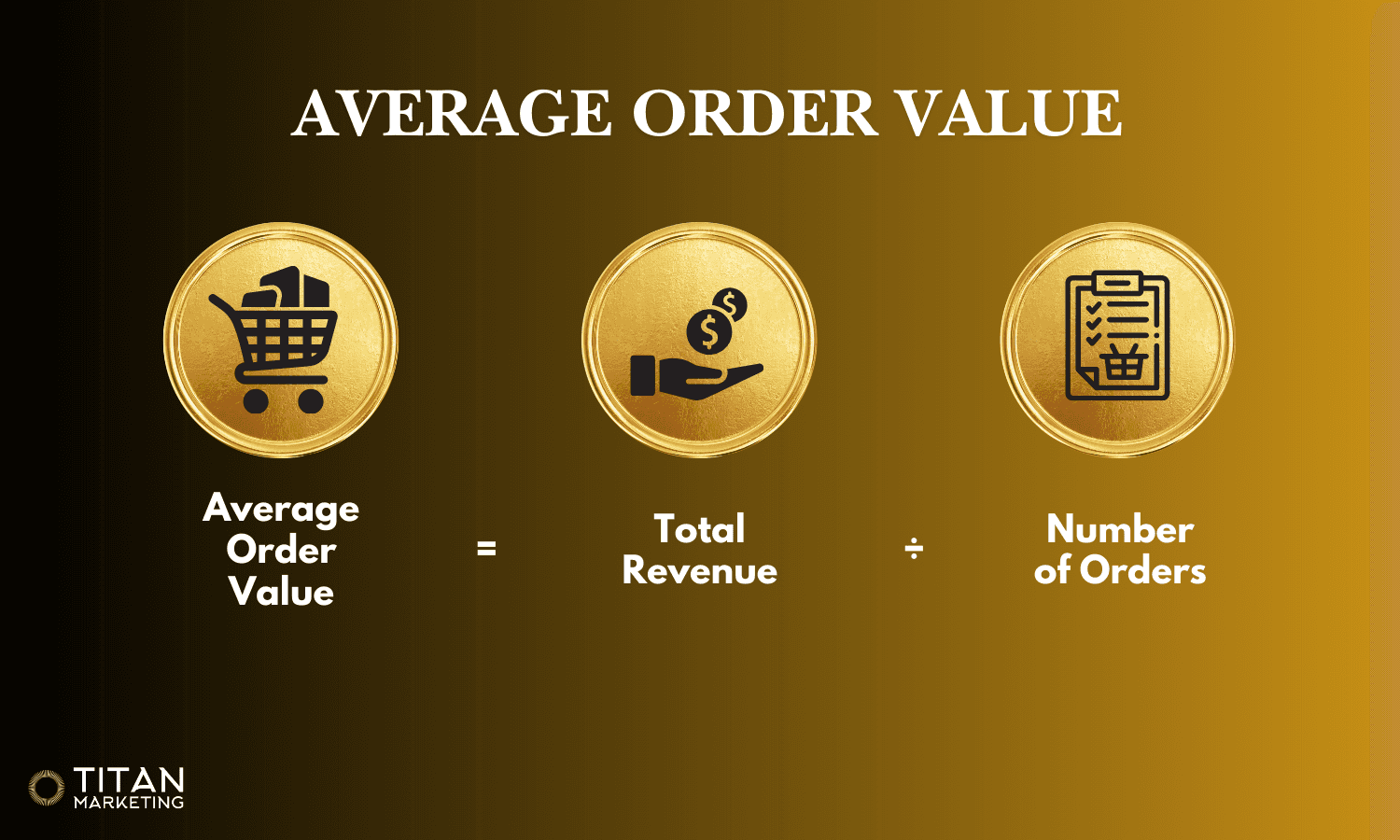
For example, $10,000 in revenue from 200 orders results in a $50 AOV. This metric highlights customer purchasing habits and helps identify opportunities for upselling, cross-selling, and promotions.
AOV's Impact on Profitability:
Boosting AOV directly improves revenue without the high costs of customer acquisition. For instance, a 10% increase in AOV across hundreds of transactions significantly impacts overall profitability. It also maximises the return on marketing spend by making each transaction more valuable. Learn how optimising your email marketing conversion rate can significantly boost ROI.
Section 2: 11 Actionable Strategies to Increase Average Order Value
Boosting Average Order Value (AOV) is a critical goal for e-commerce success. With actionable strategies tailored to your audience, you can increase revenue without needing additional customers. Below are 11 proven ways to increase AOV, with examples and tools you can implement today.
1. Leverage Upselling and Cross-Selling
Encourage customers to upgrade their purchases with premium options or add complementary products. Upselling works by suggesting higher-value alternatives, while cross-selling promotes items that pair well with what’s already in their cart. Explore examples of email marketing campaigns that inspire upselling and cross-selling techniques.
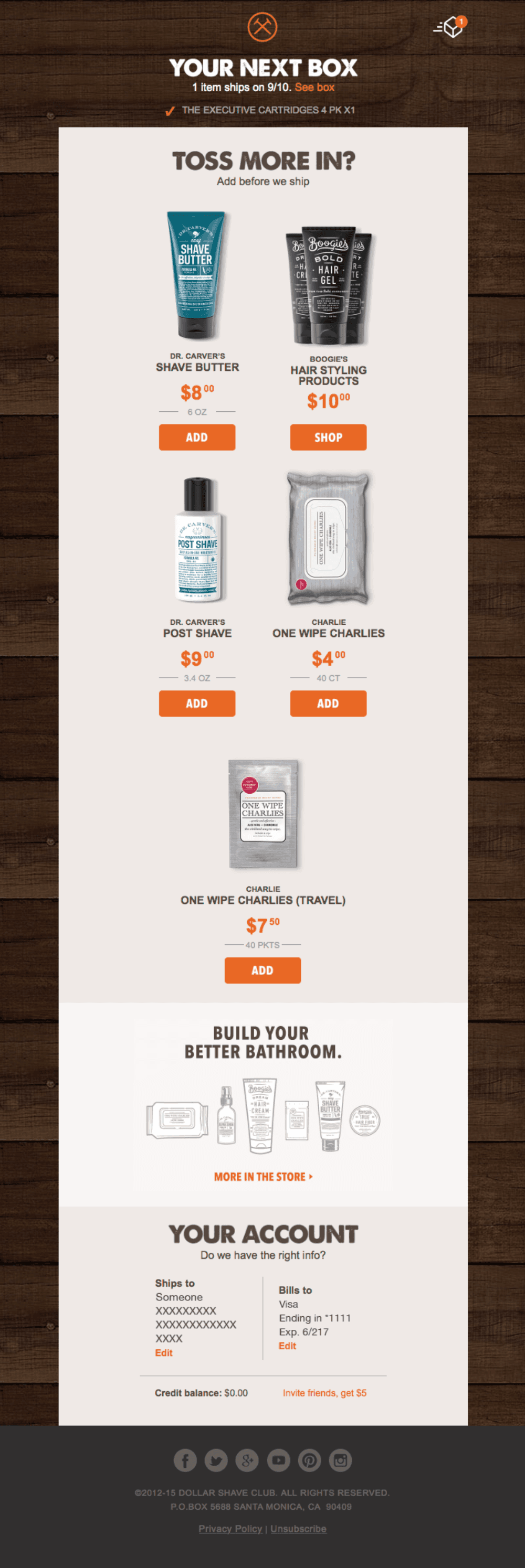
Source: Really Good Emails
2. Create Irresistible Product Bundles
Group related products into discounted bundles to increase perceived value. Bundles simplify the decision-making process for customers while encouraging them to spend more. See how countdown timers for email can enhance bundle promotions and drive urgency.

Source: Really Good Emails
3. Include Free Shipping Thresholds in Abandoned Cart Flows
Send abandoned cart emails highlighting the free shipping threshold to encourage customers to increase their cart value. Implement abandoned cart flows that encourage spending to meet free shipping thresholds.
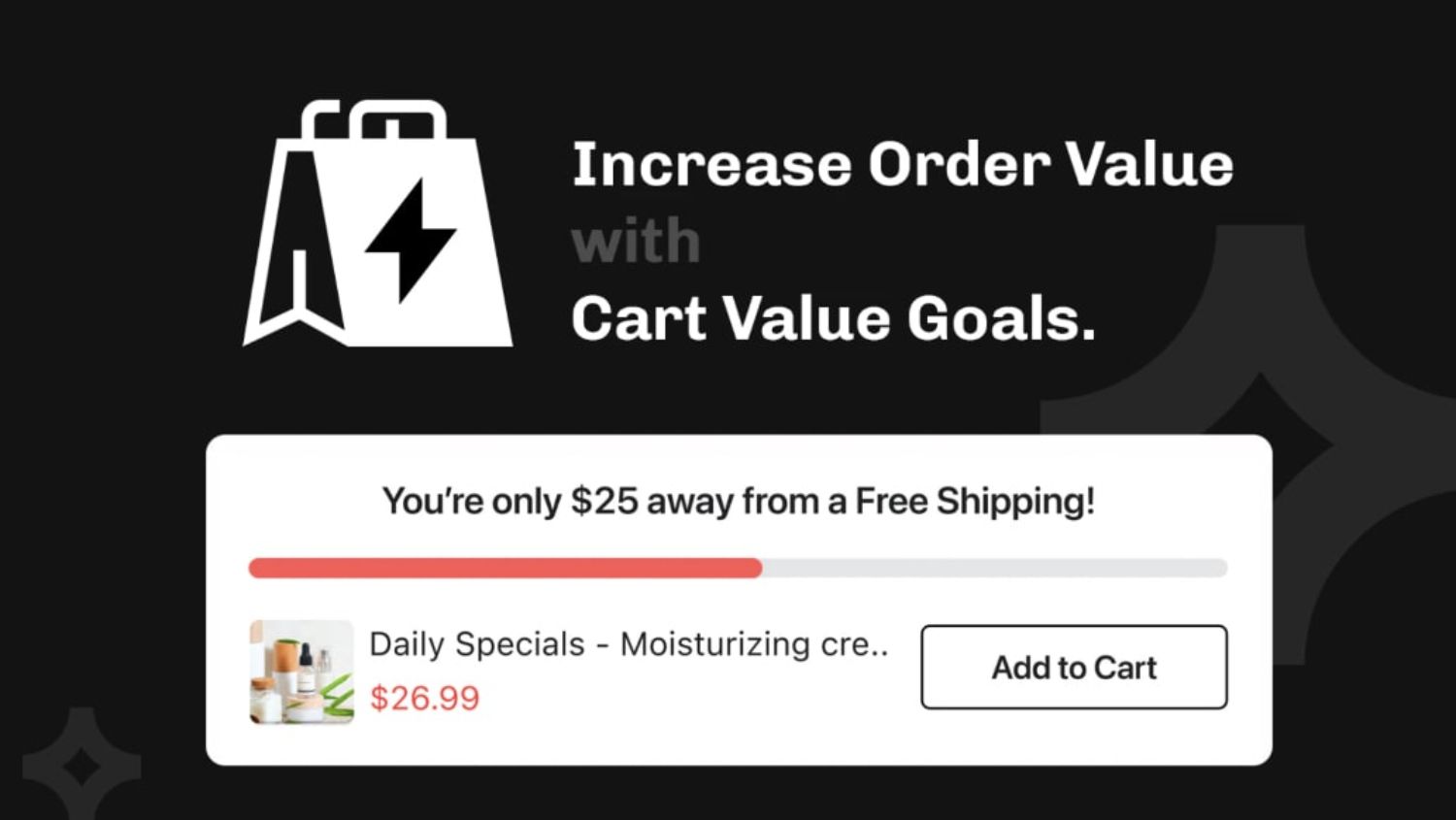
Source: Digismoothie
4. Offer Limited-Time Discounts
Create urgency by offering time-sensitive discounts, such as “Get 20% off orders over $100 – today only!” Limited-time offers to tap into the fear of missing out (FOMO), compelling customers to act quickly and spend more.
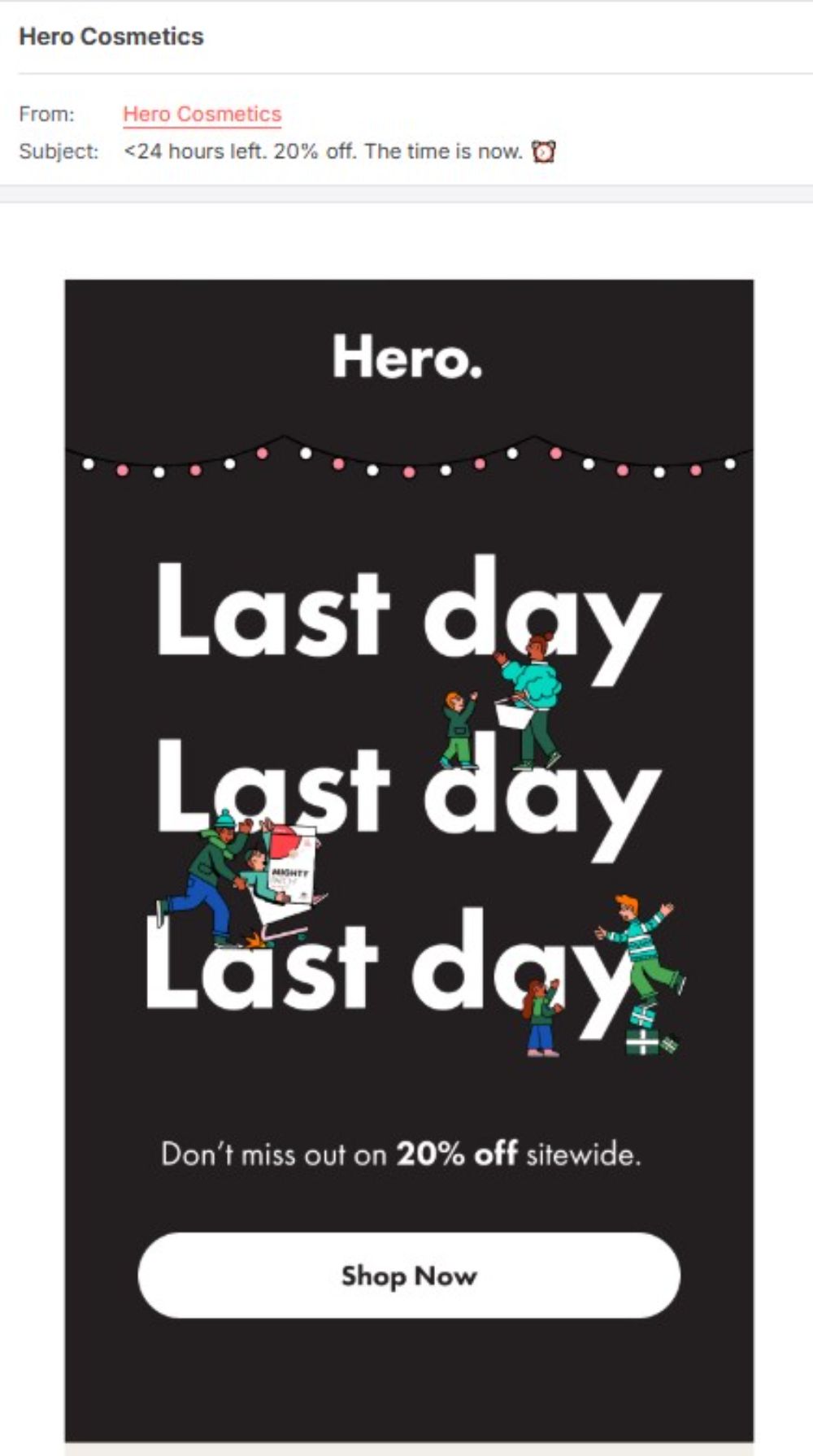
Source: Really Good Emails
5. Implement Loyalty Programs
Reward repeat purchases with points or discounts to encourage larger orders. Loyalty programs like Smile.io or LoyaltyLion let customers earn points for reaching higher spend thresholds, redeemable for rewards. Re-engage lapsed customers with loyalty-focused strategies.
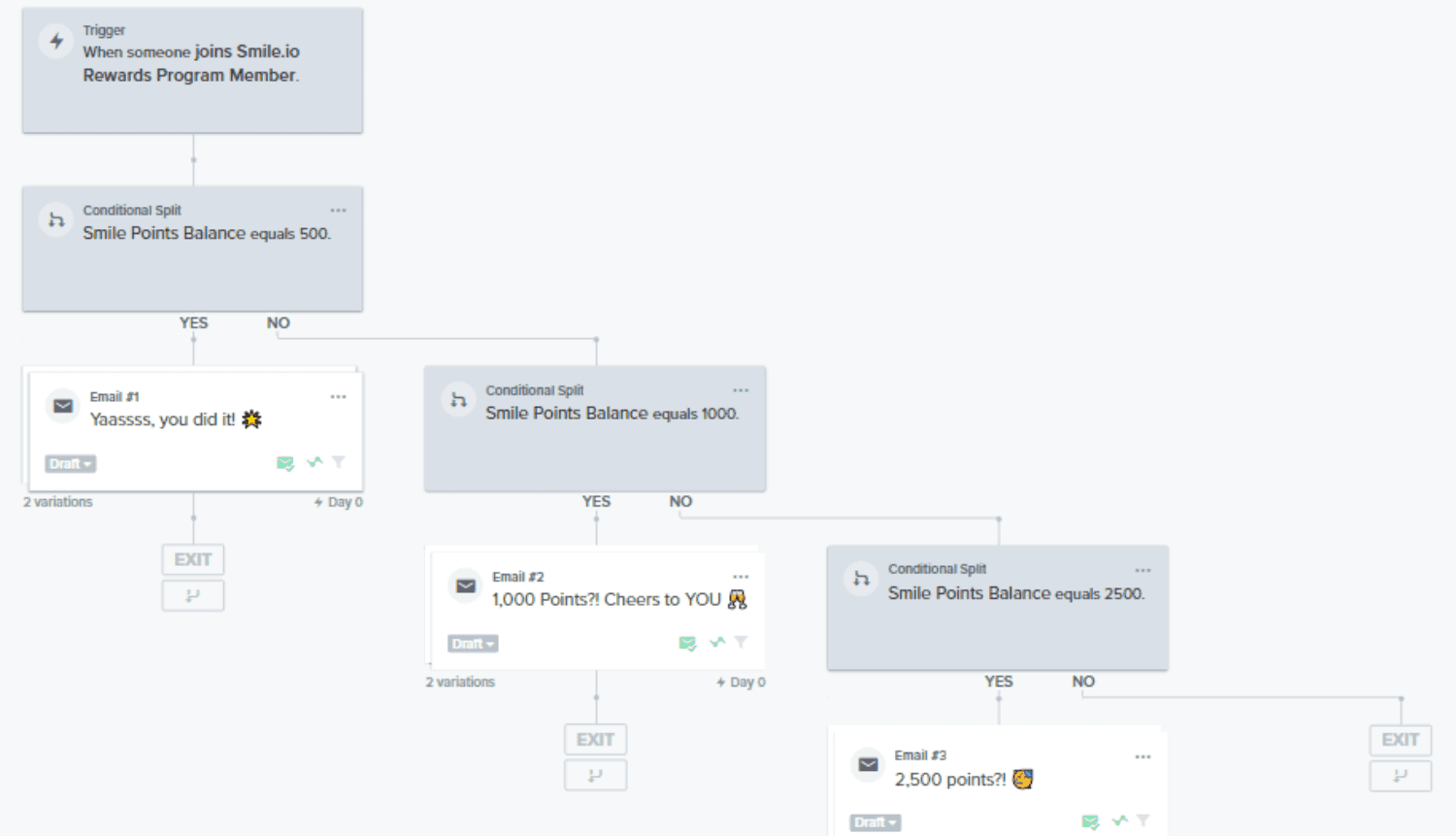
Source: Klaviyo
6. Personalize Recommendations Using AI
Use AI-powered tools like Klaviyo to suggest products tailored to individual customer preferences and purchase behaviour. For example, recommend items frequently bought together or products aligned with their browsing history.
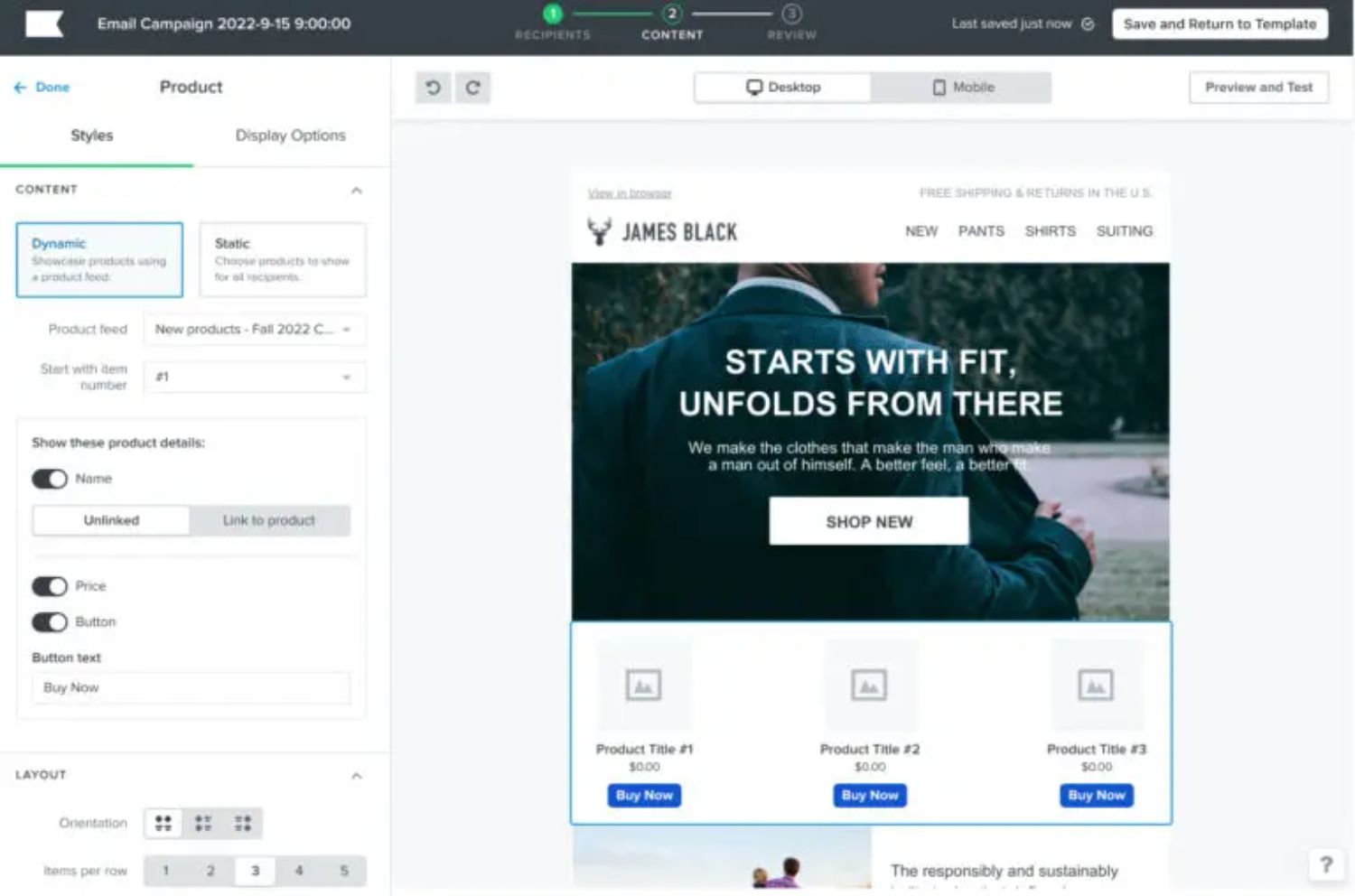
Source: Klaviyo
7. Optimise Checkout with Add-Ons
Add last-minute product suggestions at checkout, such as smaller, complementary items like travel-sized versions or warranties.
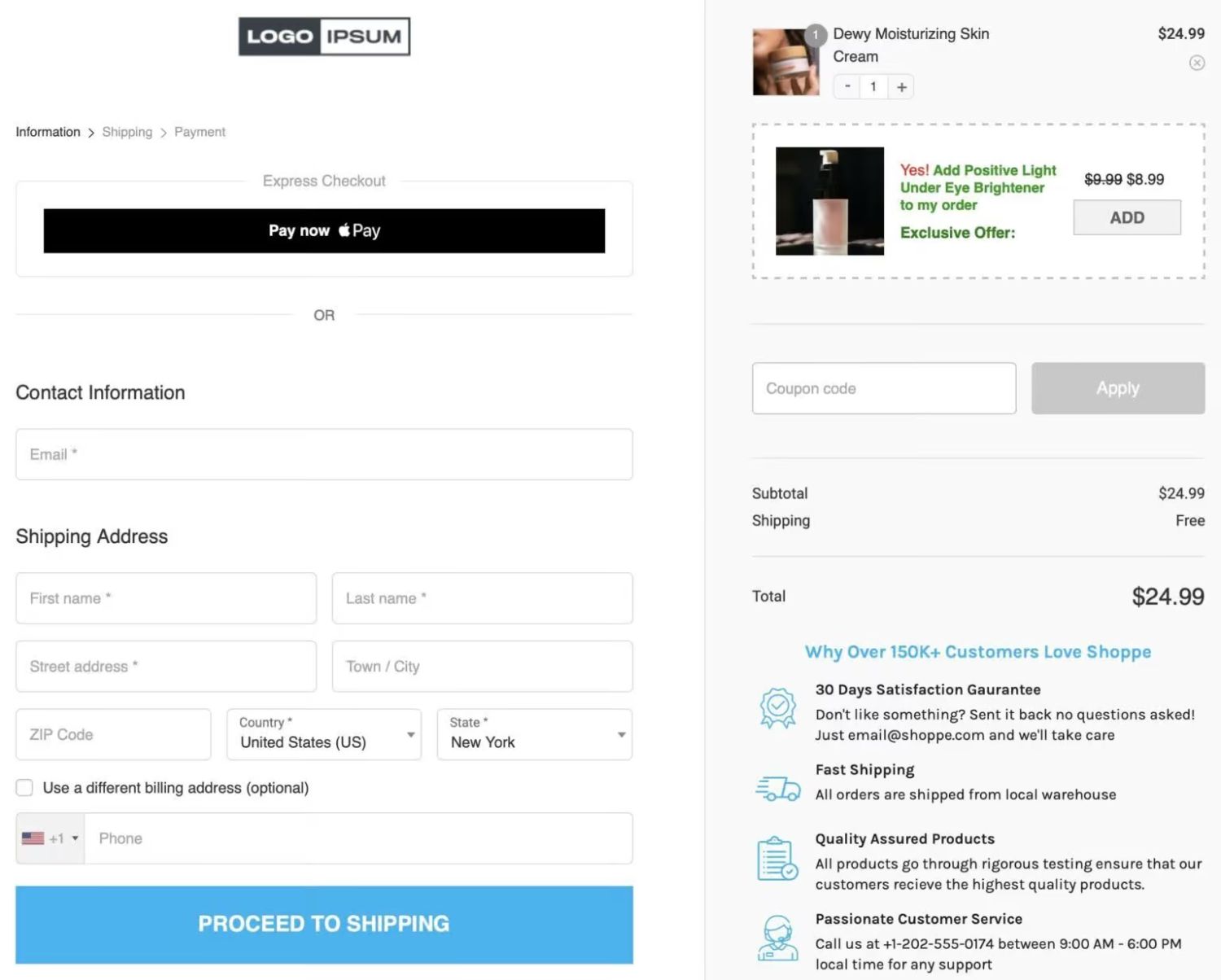
Source: FunnelKit
8. Use Order Editing to Upsell Post-Purchase
Leverage Shopify apps like Order Editing to let customers modify their purchases post-checkout, offering to upsell opportunities. For instance, customers could add items they forgot or upgrade their selections, boosting AOV by 11–13%, according to Shopify data.
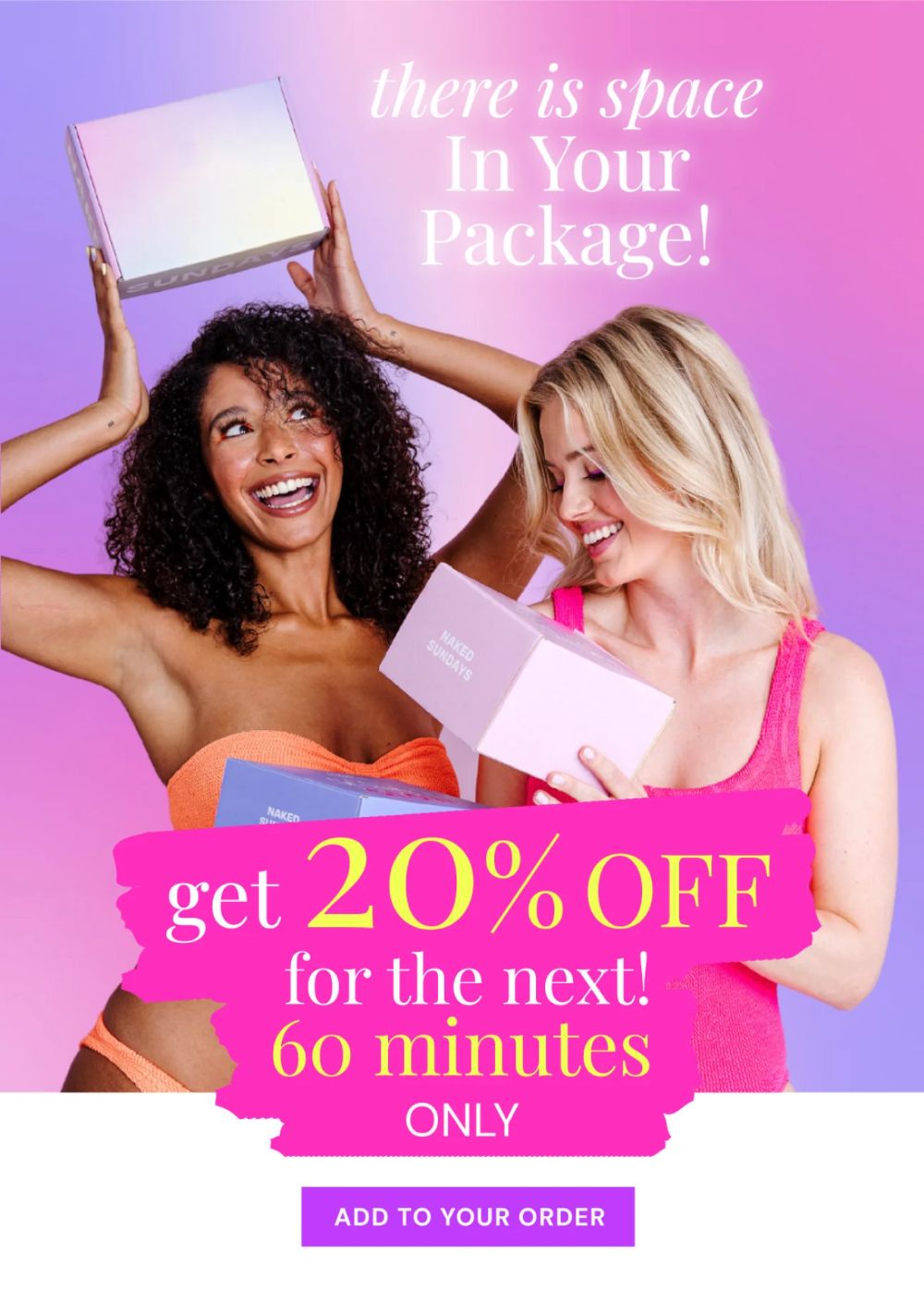
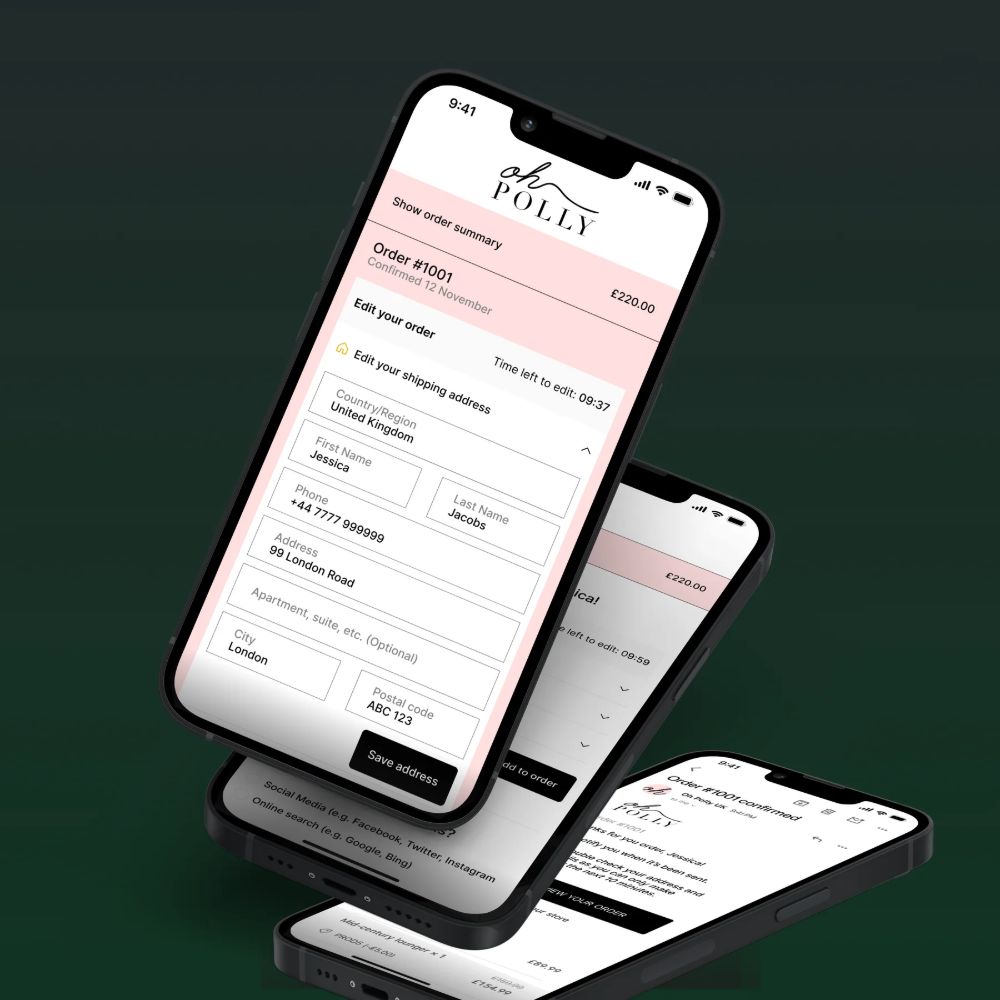
Source: OrderEditing
9. Incorporate RFM Segmentation
Use Klaviyo’s CDP to segment customers by Recency, Frequency, and Monetary value (RFM). Offer premium products or bundles to VIP customers while providing entry-level upsell options for at-risk or lapsed customers. For example, a fashion retailer could promote exclusive collections to loyalists or discounted basics to inactive shoppers. Learn how advanced analytics tools enhance RFM segmentation in Mastering Klaviyo DTC Reporting & Analytics.
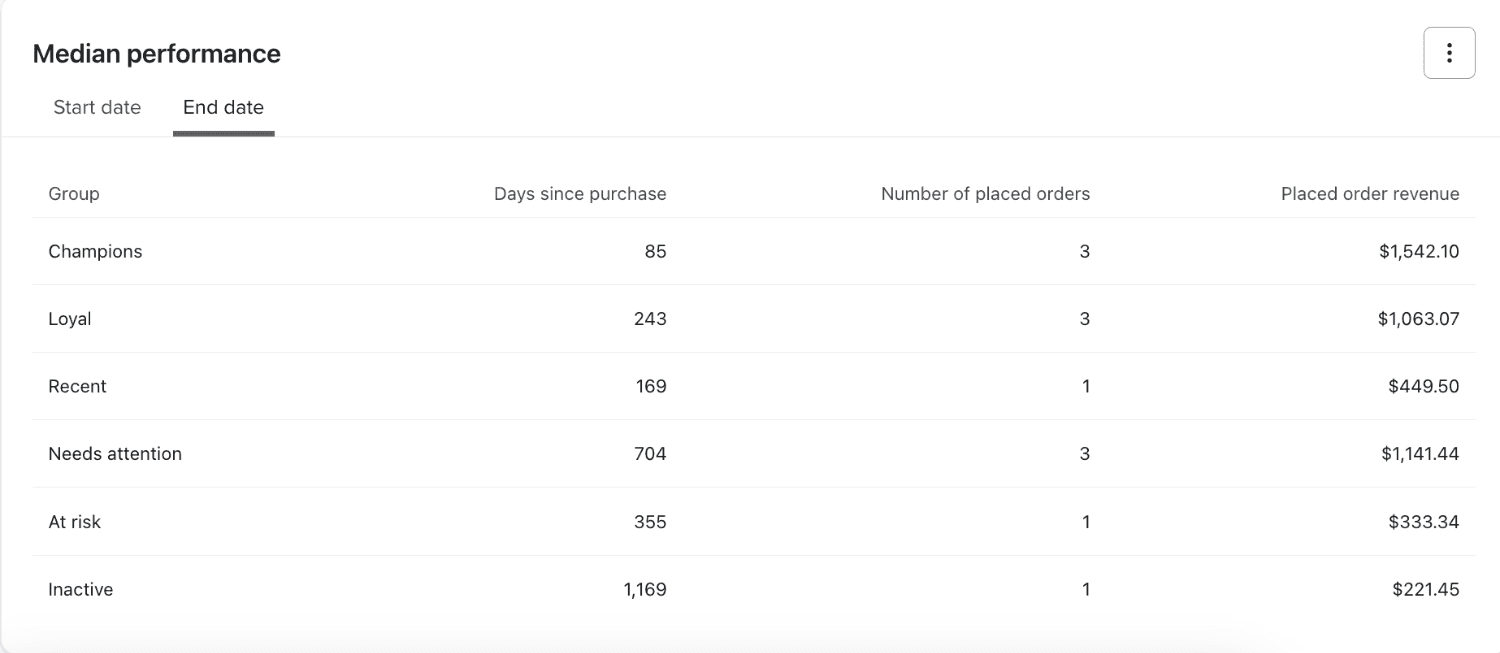
Source: Klaviyo
10. Test Dynamic Pricing Strategies
Use AI-driven tools to adjust prices based on demand, customer behaviour, or market trends. For example, offer exclusive discounts to price-sensitive customers or premium pricing for high-demand items.
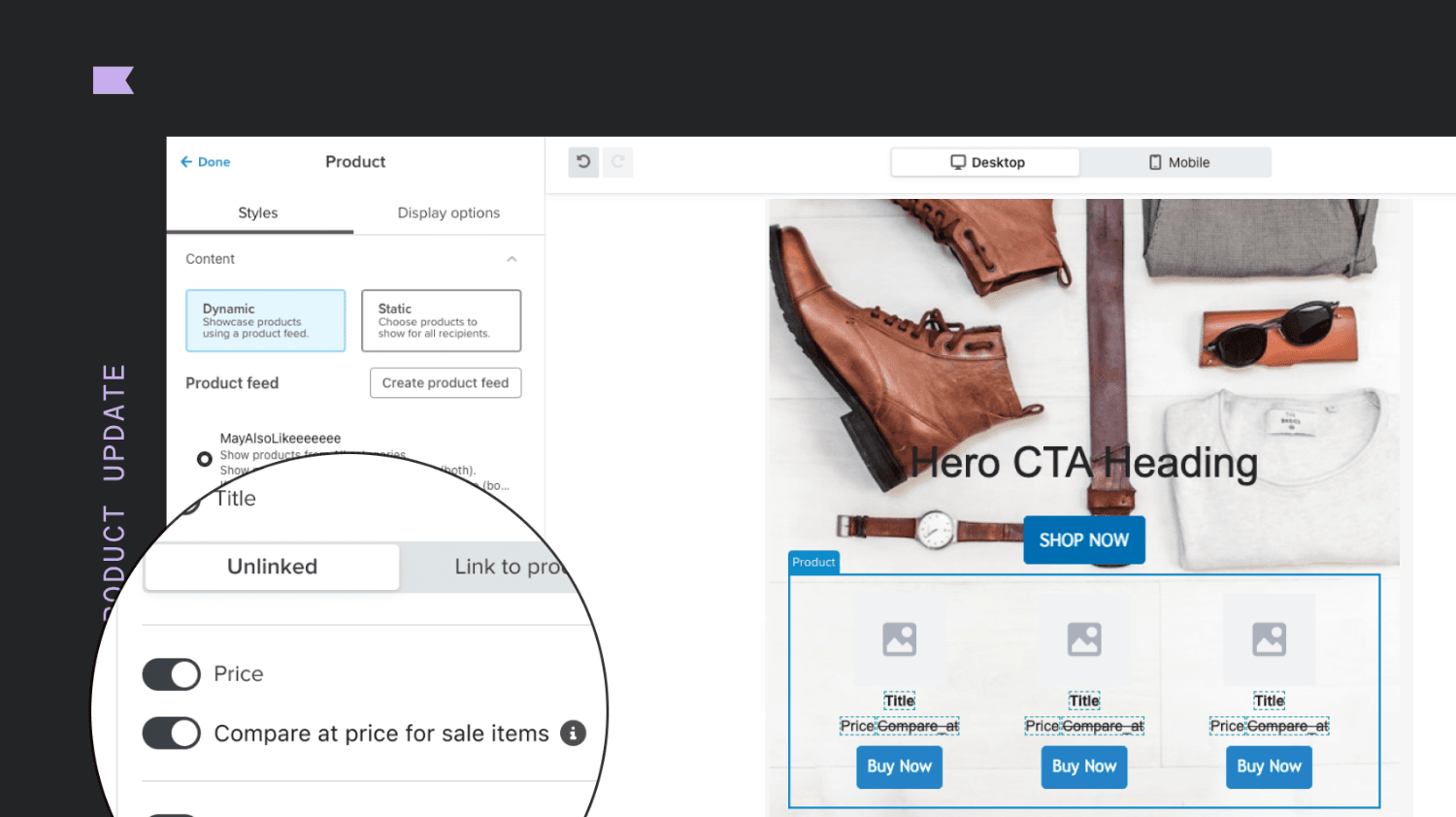
Source: Klaviyo
11. Capitalize on Seasonal Promotions
Create seasonal campaigns that bundle holiday-specific products or offer discounts during peak shopping periods like Black Friday. For example, bundle cosy winter apparel during Christmas or sunscreen and swimsuits for summer.
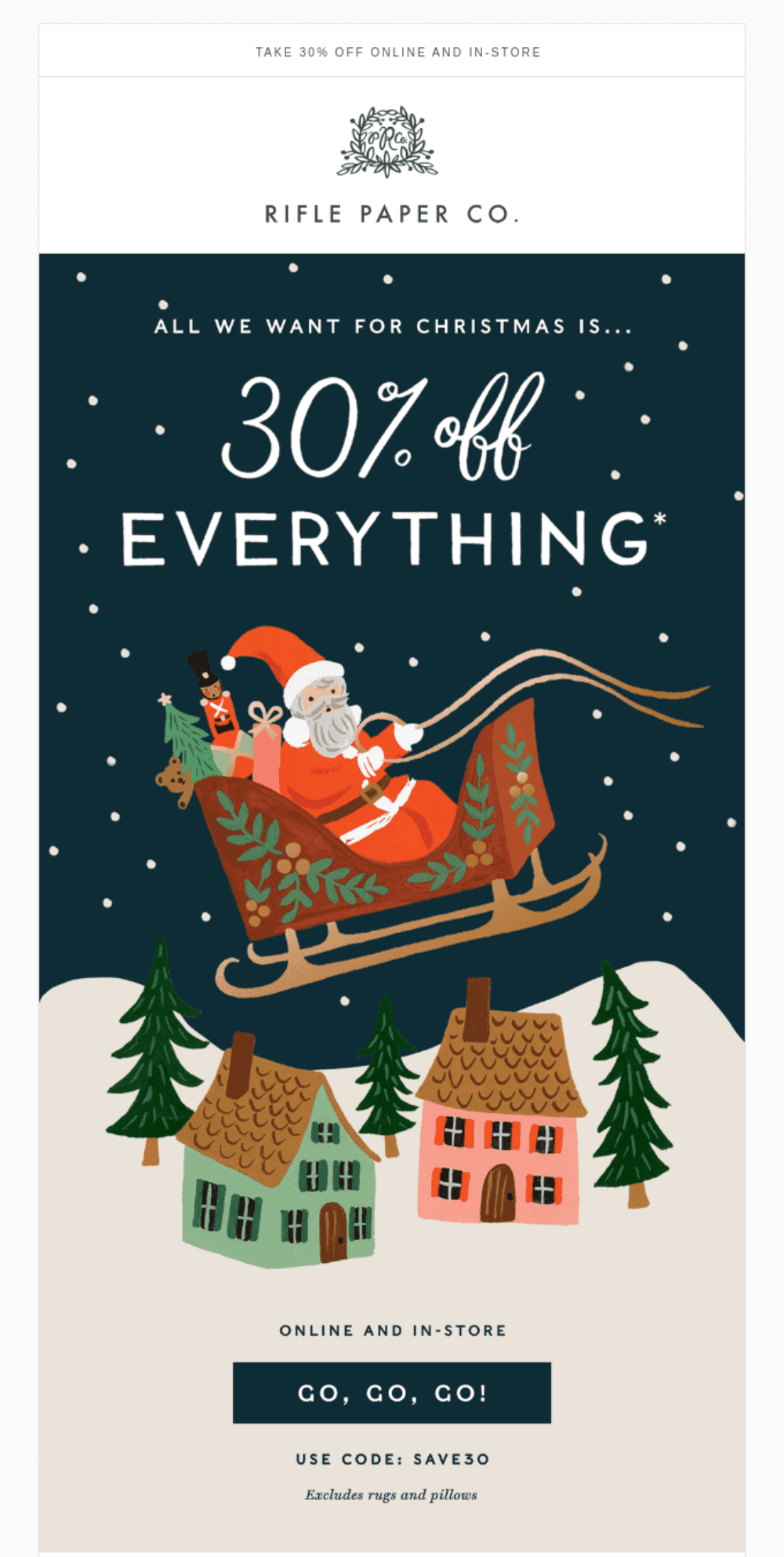
Source: Really Good Emails
Section 3: Tools and Technologies to Boost AOV
Top Tools to Increase AOV
Shopify
Shopify apps like Bold Upsell and ReConvert make it easy to implement upselling and bundling strategies. For example, suggest complementary products or premium upgrades during checkout to boost cart value. These features are designed to simplify upselling and make it actionable for any e-commerce store. See how to integrate Shopify with Klaviyo for streamlined upselling.
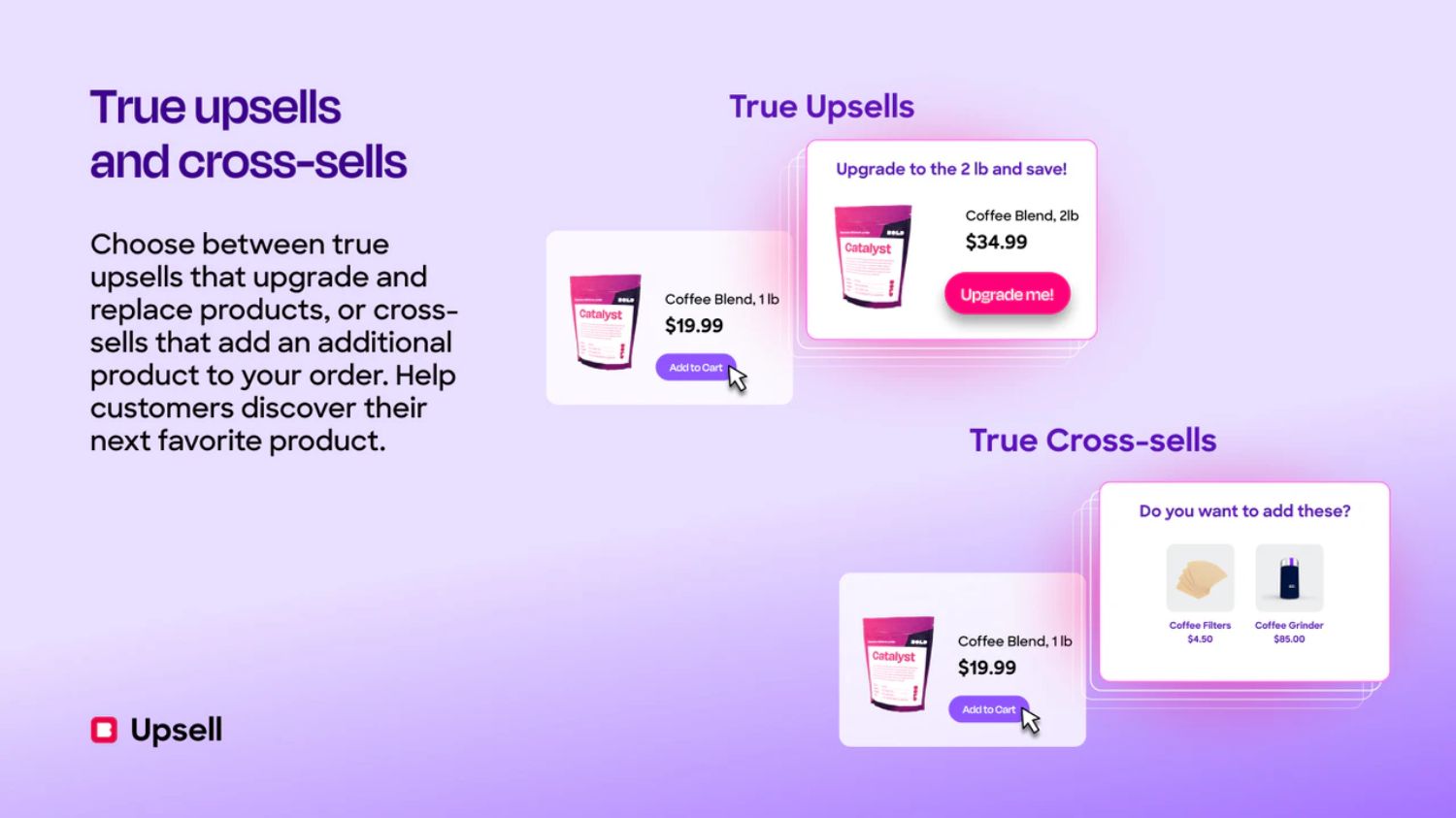
Source: Shopify
Klaviyo
Klaviyo’s segmentation and automation tools allow for highly tailored email and SMS campaigns. Predictive analytics in Klaviyo can recommend the perfect upsell or cross-sell based on customer browsing or purchase behaviour. Personalising your shopping experience through these features ensures customers are engaged and more likely to increase their order size. Explore segmentation strategies in our 3 Klaviyo Segmentation Strategies to Boost DTC Sales.
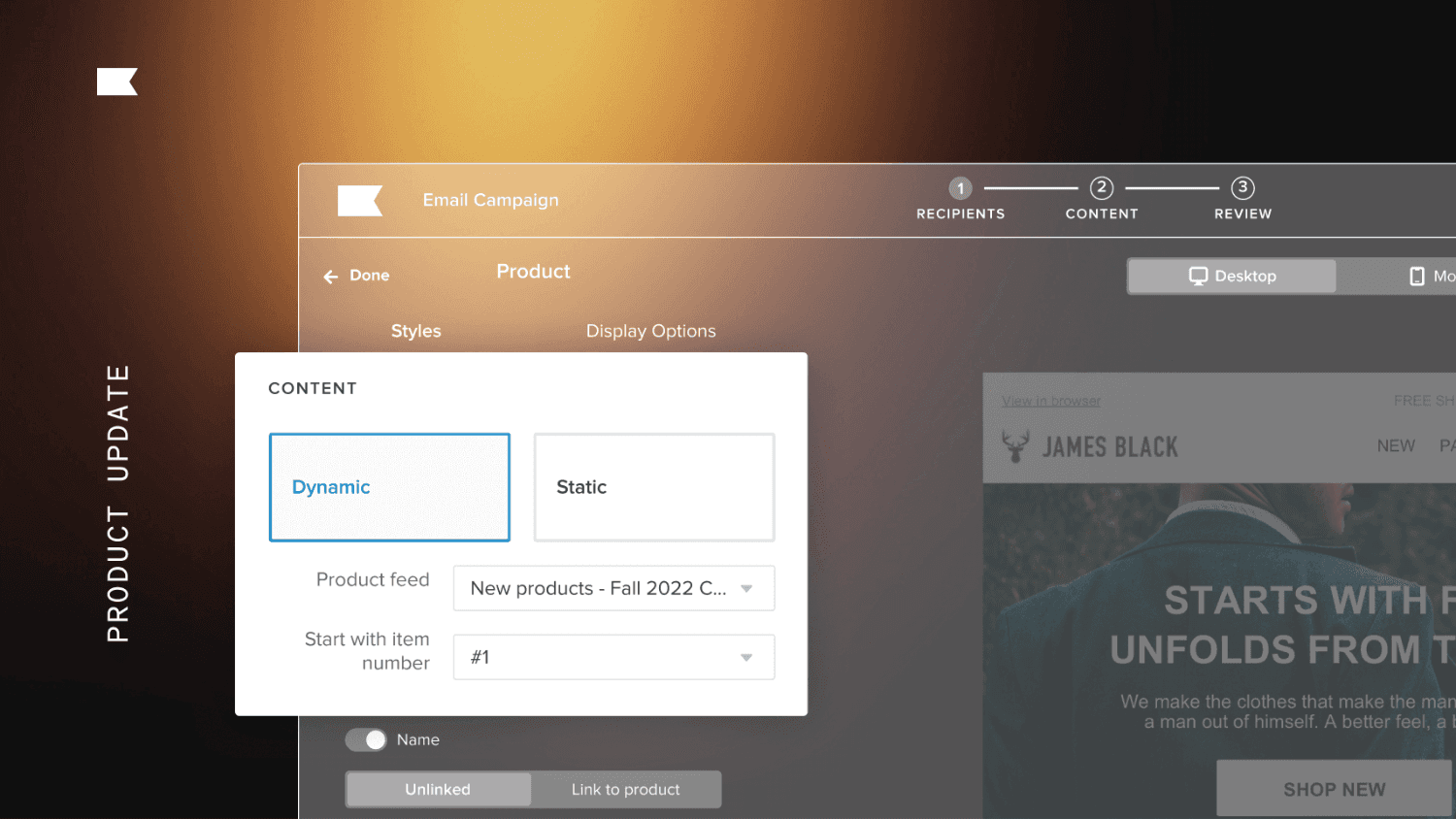
Source: Klaviyo
Smile IO
Smile.io is a loyalty program platform that helps e-commerce businesses boost AOV by rewarding customers for larger purchases and repeat transactions. Its tiered rewards, referral incentives, and personalised offers encourage higher spending and return visits, driving revenue growth while strengthening customer loyalty.
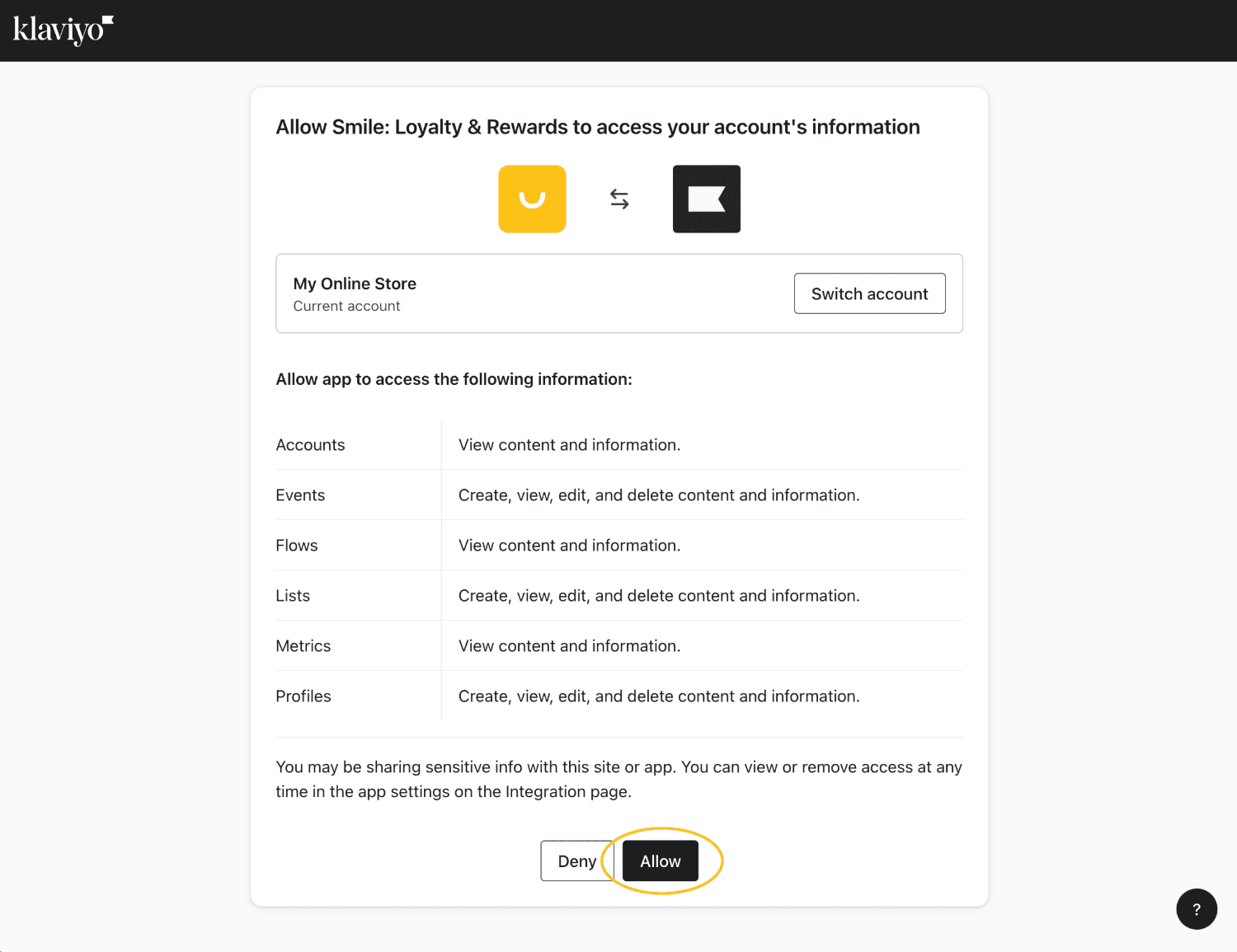
Source: Smile IO
Section 4: Customer Segmentation for Tailored AOV Strategies
Customer segmentation allows businesses to create personalized marketing strategies tailored to different customer groups. By understanding customer behaviour, preferences, and purchase patterns, you can deliver targeted campaigns that drive higher Average Order Value (AOV).
1. Behavioral Segmentation
Group customers by past purchases and engagement to target them with relevant offers. For example, upsell frequently bought products or use win-back campaigns for lapsed buyers. Tools like Klaviyo’s behavioural segmentation simplify this process. Utilise pop-up forms to gather actionable customer behaviour data.
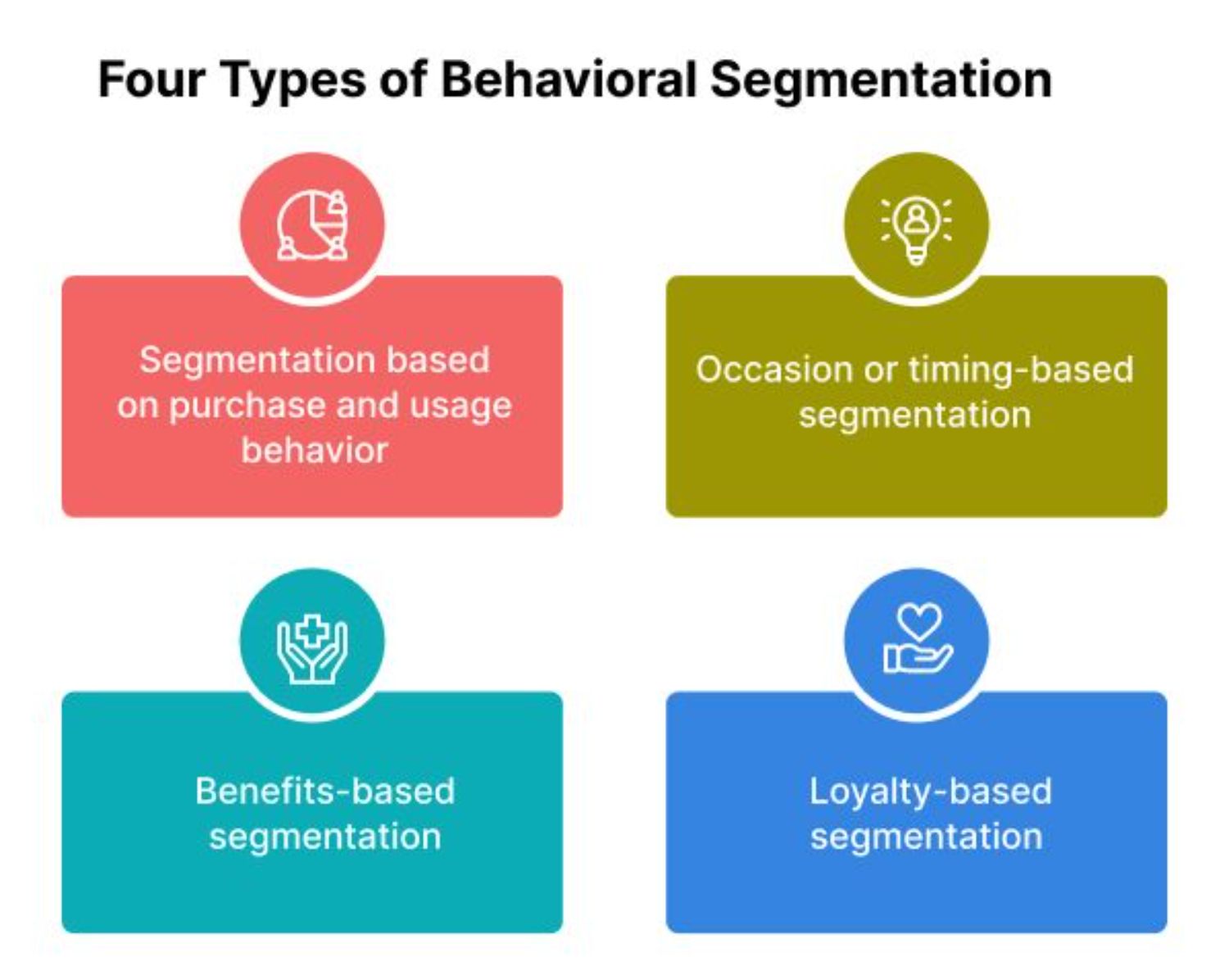
Source: Revechat
2. Demographic Segmentation
Targeting customers by age, gender, or location allows businesses to tailor offers more effectively. For instance, a skincare brand might promote anti-ageing products to older audiences, while targeting younger audiences with trendy skincare bundles.
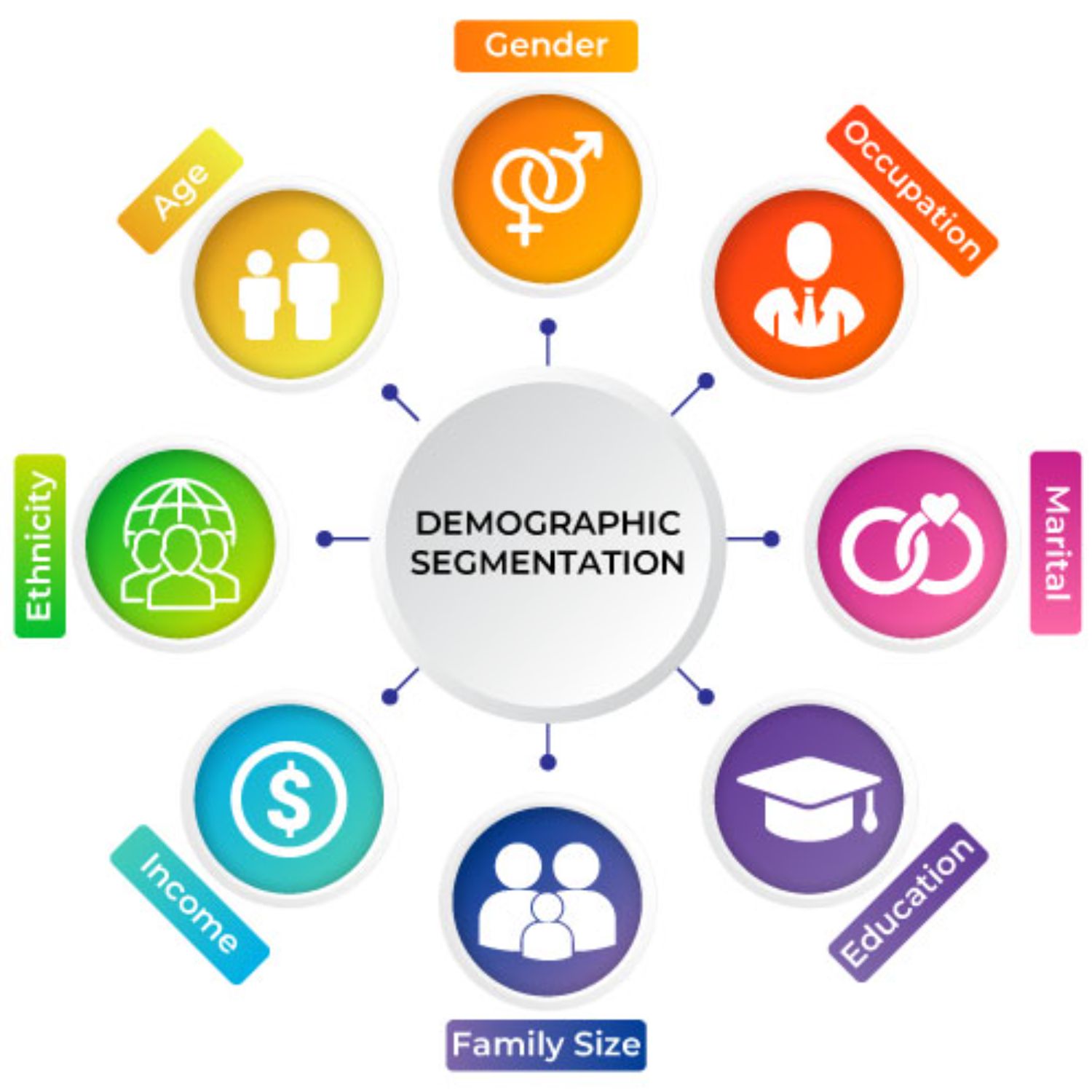
Source: NotifyVisitors
3. Zero-Party Data for Personalization
Gathering data directly from customers through quizzes or surveys empowers businesses to offer highly personalised shopping experiences. Tools like Octane AI enable you to collect preferences like product goals or skin types. For example, a beauty brand might tailor a welcome flow based on quiz responses, as outlined in our blog, 8 Essential Klaviyo Flows to Boost Customer Loyalty.
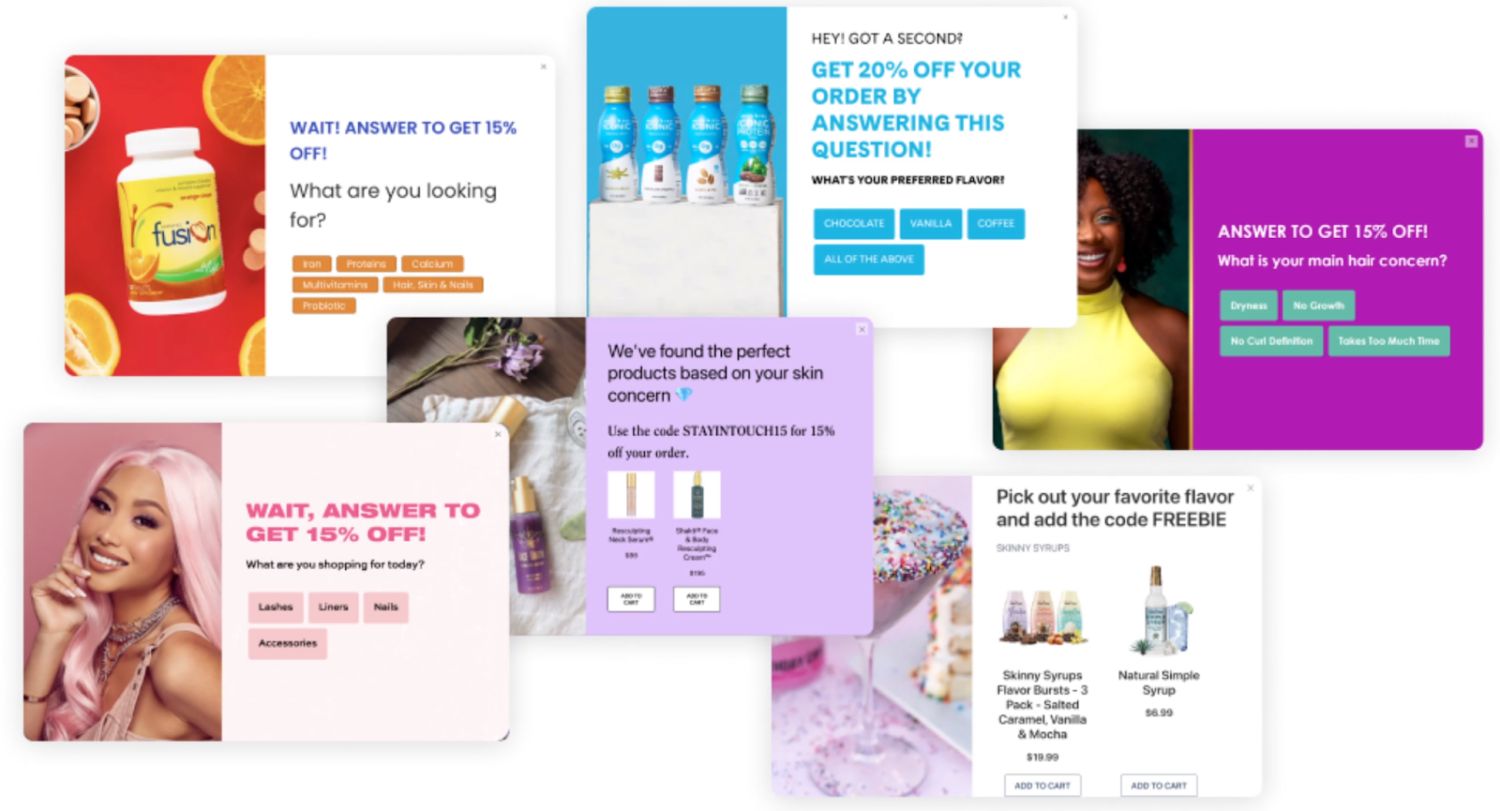
Source: Octane AI
4. High-Value Customer Segments (VIPs)
VIP customers or loyalists represent a major opportunity to increase AOV. Businesses can offer these segments premium perks like free shipping, early product launches, or luxury bundles. Segmenting these customers with Klaviyo’s tools ensures precision, as discussed in our blog, Klaviyo Predictive Analytics: AI Guide & 3 Use Cases.
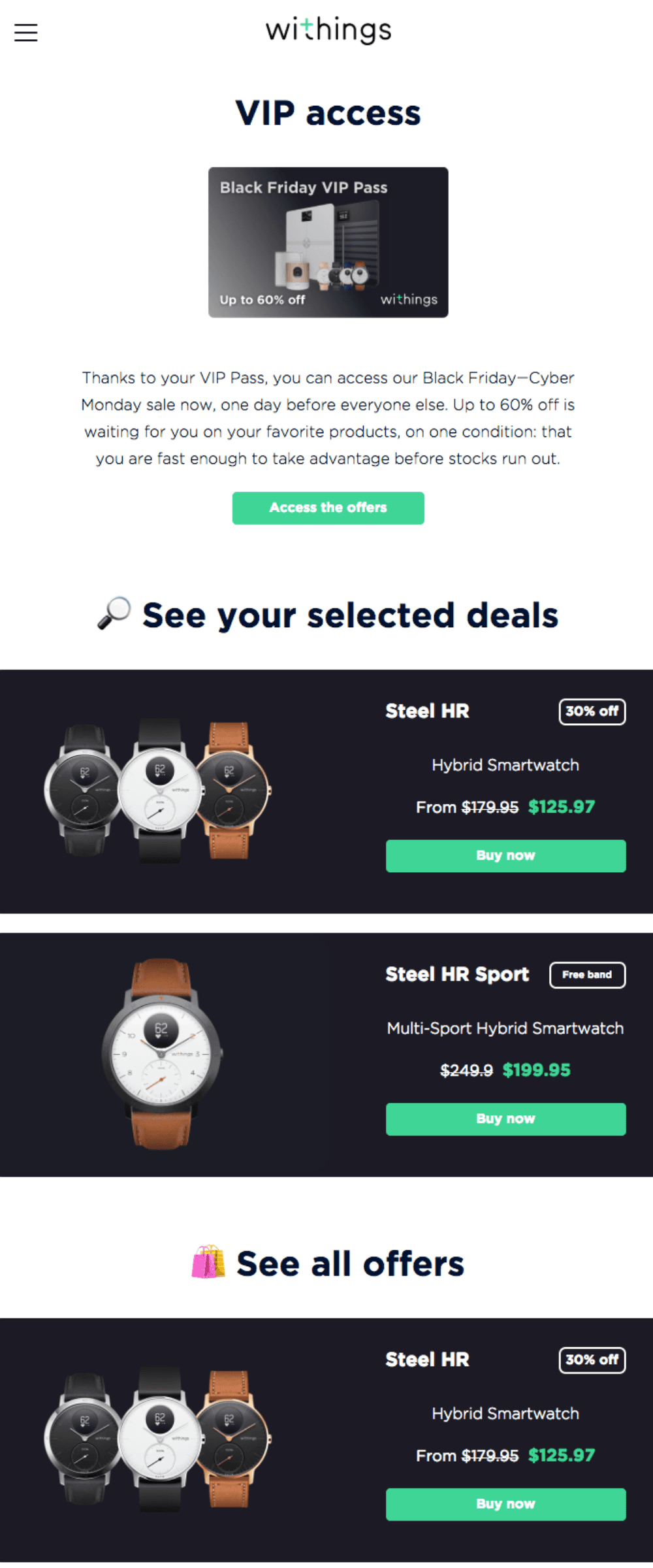
Source: Really Good Emails
Section 5: Tracking, Testing, and Optimizing Your AOV Strategies
Provide a short introduction for this section.
Key Metrics to Monitor
Track KPIs like cart value, upsell success rates, and ROI. Tools like Klaviyo provide advanced analytics to monitor segmentation performance and revenue trends. Learn more in Mastering Klaviyo DTC Reporting & Analytics.
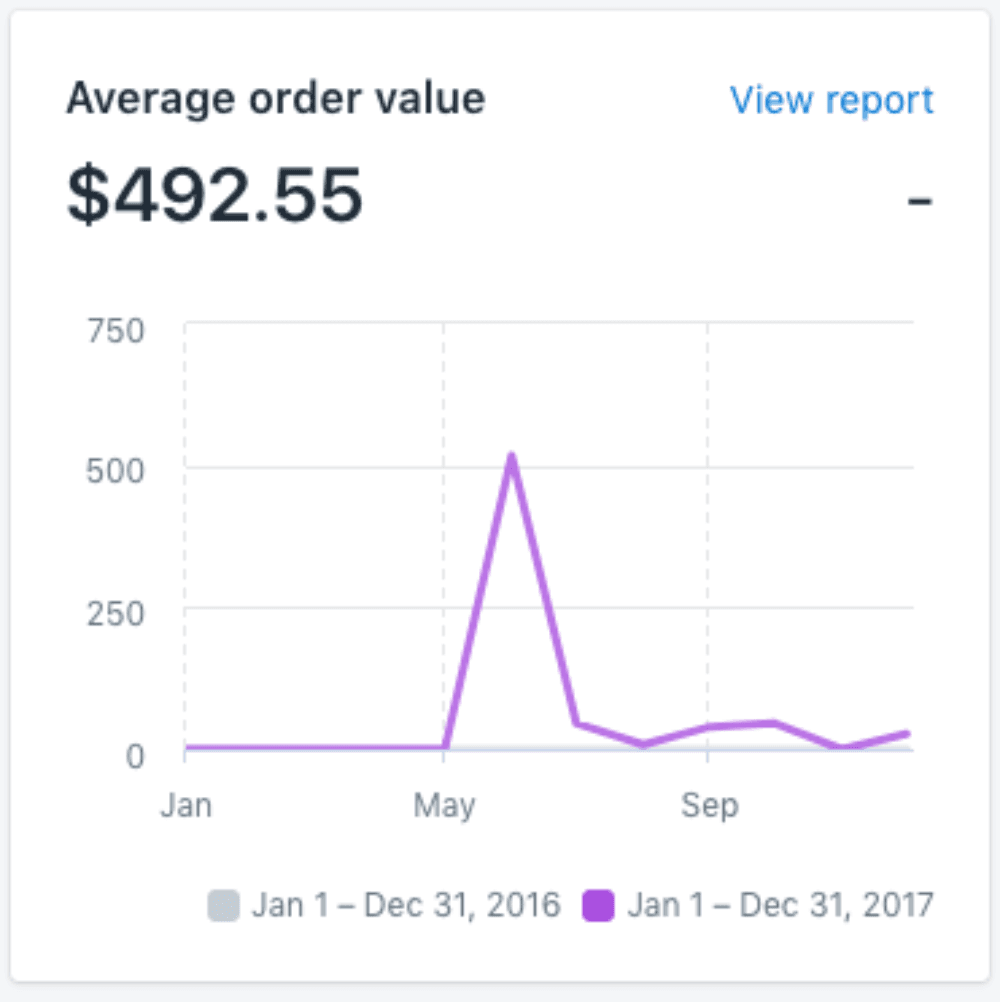
Source: Klaviyo
A/B Testing for Upselling and Cross-Selling
Test different strategies, like bundles versus standalone upsell, to see what resonates. Use Klaviyo’s A/B testing tools for optimising email design and copy. Check out 10 Essential A/B Tests to Boost Email Conversions.
Visual Suggestion: Chart comparing results from an A/B test on an upsell campaign.
Use Analytics for Data-Driven Decisions
Leverage analytics tools like Google Analytics for cart trends and Klaviyo for predictive insights. Learn how predictive tools boost AOV in Klaviyo Predictive Analytics: AI Guide & 3 Use Cases.
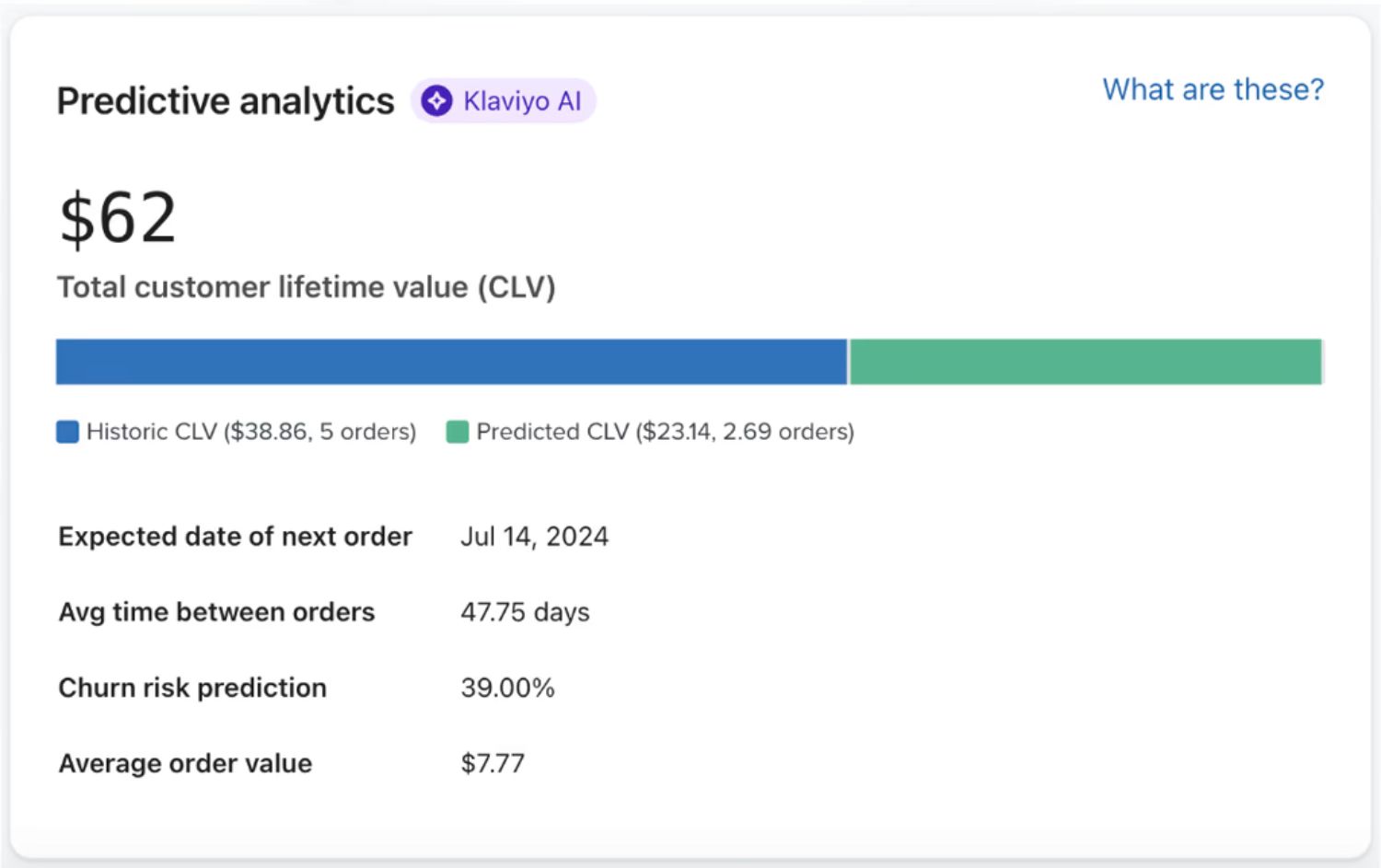
Conclusion
Boosting your Average Order Value (AOV) is one of the most effective ways to grow your revenue while maximising the potential of your existing customers. With actionable strategies like upselling, bundling, and leveraging powerful tools such as Klaviyo, you can optimise every transaction and improve your overall profitability.
By focusing on segmentation, personalisation, and data-driven insights, you not only increase AOV but also enhance customer satisfaction and retention. Start implementing these proven techniques today to see immediate results in your e-commerce business.
Key Takeaways:
Maximise Revenue with Upselling and Cross-Selling: Use tailored recommendations to encourage customers to upgrade or add complementary products.
Leverage Klaviyo for Personalised Campaigns: Take advantage of Klaviyo’s predictive analytics and segmentation tools for data-driven customer engagement.
Incentivise Higher Spending with Free Shipping Thresholds: Encourage customers to increase their cart size by offering free shipping for larger orders.
Boost Loyalty with Reward Programs: Platforms like Smile.io and LoyaltyLion can incentivise repeat purchases and larger order values.
Engage with Behavioural Segmentation: Group customers by purchase history and tailor offers for higher relevance and AOV.
Use Zero-Party Data for Personalised Experiences: Collect customer preferences through quizzes or surveys to deliver highly tailored recommendations.
Track Success with Analytics: Monitor cart value, ROI, and campaign performance with tools like Klaviyo and Google Analytics.
Experiment with A/B Testing: Refine strategies for upselling and cross-selling with A/B tests to determine what resonates most with your audience.
Looking for more ways to boost AOV?
Click here for a free audit and tailored insights to get your customers loading up their carts!
What if you could significantly boost your revenue without spending more on customer acquisition? Increasing Average Order Value (AOV) is a game-changer for businesses aiming to get more out of their existing customer base. By encouraging customers to spend more on each transaction, you can unlock greater profitability with minimal extra effort.
In this blog, we’ll share proven strategies to help you maximise AOV. From actionable upselling and cross-selling techniques to creating irresistible bundles and leveraging tools like Klaviyo for personalised shopping experiences, this guide is packed with tips you can implement today.
Whether you’re focused on improving customer retention, simplifying your marketing efforts, or driving long-term growth, you’ll discover practical insights to transform your e-commerce revenue strategy.
Section 1: Why Increasing Average Order Value Matters
In e-commerce, success isn’t just about acquiring new customers, it’s about maximising the value of each transaction. Average Order Value (AOV) plays a vital role in driving revenue growth while reducing acquisition costs and ensuring long-term profitability.
Defining Average Order Value (AOV):
AOV measures the average amount a customer spends per order and is calculated as:

For example, $10,000 in revenue from 200 orders results in a $50 AOV. This metric highlights customer purchasing habits and helps identify opportunities for upselling, cross-selling, and promotions.
AOV's Impact on Profitability:
Boosting AOV directly improves revenue without the high costs of customer acquisition. For instance, a 10% increase in AOV across hundreds of transactions significantly impacts overall profitability. It also maximises the return on marketing spend by making each transaction more valuable. Learn how optimising your email marketing conversion rate can significantly boost ROI.
Section 2: 11 Actionable Strategies to Increase Average Order Value
Boosting Average Order Value (AOV) is a critical goal for e-commerce success. With actionable strategies tailored to your audience, you can increase revenue without needing additional customers. Below are 11 proven ways to increase AOV, with examples and tools you can implement today.
1. Leverage Upselling and Cross-Selling
Encourage customers to upgrade their purchases with premium options or add complementary products. Upselling works by suggesting higher-value alternatives, while cross-selling promotes items that pair well with what’s already in their cart. Explore examples of email marketing campaigns that inspire upselling and cross-selling techniques.

Source: Really Good Emails
2. Create Irresistible Product Bundles
Group related products into discounted bundles to increase perceived value. Bundles simplify the decision-making process for customers while encouraging them to spend more. See how countdown timers for email can enhance bundle promotions and drive urgency.

Source: Really Good Emails
3. Include Free Shipping Thresholds in Abandoned Cart Flows
Send abandoned cart emails highlighting the free shipping threshold to encourage customers to increase their cart value. Implement abandoned cart flows that encourage spending to meet free shipping thresholds.

Source: Digismoothie
4. Offer Limited-Time Discounts
Create urgency by offering time-sensitive discounts, such as “Get 20% off orders over $100 – today only!” Limited-time offers to tap into the fear of missing out (FOMO), compelling customers to act quickly and spend more.

Source: Really Good Emails
5. Implement Loyalty Programs
Reward repeat purchases with points or discounts to encourage larger orders. Loyalty programs like Smile.io or LoyaltyLion let customers earn points for reaching higher spend thresholds, redeemable for rewards. Re-engage lapsed customers with loyalty-focused strategies.

Source: Klaviyo
6. Personalize Recommendations Using AI
Use AI-powered tools like Klaviyo to suggest products tailored to individual customer preferences and purchase behaviour. For example, recommend items frequently bought together or products aligned with their browsing history.

Source: Klaviyo
7. Optimise Checkout with Add-Ons
Add last-minute product suggestions at checkout, such as smaller, complementary items like travel-sized versions or warranties.

Source: FunnelKit
8. Use Order Editing to Upsell Post-Purchase
Leverage Shopify apps like Order Editing to let customers modify their purchases post-checkout, offering to upsell opportunities. For instance, customers could add items they forgot or upgrade their selections, boosting AOV by 11–13%, according to Shopify data.


Source: OrderEditing
9. Incorporate RFM Segmentation
Use Klaviyo’s CDP to segment customers by Recency, Frequency, and Monetary value (RFM). Offer premium products or bundles to VIP customers while providing entry-level upsell options for at-risk or lapsed customers. For example, a fashion retailer could promote exclusive collections to loyalists or discounted basics to inactive shoppers. Learn how advanced analytics tools enhance RFM segmentation in Mastering Klaviyo DTC Reporting & Analytics.

Source: Klaviyo
10. Test Dynamic Pricing Strategies
Use AI-driven tools to adjust prices based on demand, customer behaviour, or market trends. For example, offer exclusive discounts to price-sensitive customers or premium pricing for high-demand items.

Source: Klaviyo
11. Capitalize on Seasonal Promotions
Create seasonal campaigns that bundle holiday-specific products or offer discounts during peak shopping periods like Black Friday. For example, bundle cosy winter apparel during Christmas or sunscreen and swimsuits for summer.

Source: Really Good Emails
Section 3: Tools and Technologies to Boost AOV
Top Tools to Increase AOV
Shopify
Shopify apps like Bold Upsell and ReConvert make it easy to implement upselling and bundling strategies. For example, suggest complementary products or premium upgrades during checkout to boost cart value. These features are designed to simplify upselling and make it actionable for any e-commerce store. See how to integrate Shopify with Klaviyo for streamlined upselling.

Source: Shopify
Klaviyo
Klaviyo’s segmentation and automation tools allow for highly tailored email and SMS campaigns. Predictive analytics in Klaviyo can recommend the perfect upsell or cross-sell based on customer browsing or purchase behaviour. Personalising your shopping experience through these features ensures customers are engaged and more likely to increase their order size. Explore segmentation strategies in our 3 Klaviyo Segmentation Strategies to Boost DTC Sales.

Source: Klaviyo
Smile IO
Smile.io is a loyalty program platform that helps e-commerce businesses boost AOV by rewarding customers for larger purchases and repeat transactions. Its tiered rewards, referral incentives, and personalised offers encourage higher spending and return visits, driving revenue growth while strengthening customer loyalty.

Source: Smile IO
Section 4: Customer Segmentation for Tailored AOV Strategies
Customer segmentation allows businesses to create personalized marketing strategies tailored to different customer groups. By understanding customer behaviour, preferences, and purchase patterns, you can deliver targeted campaigns that drive higher Average Order Value (AOV).
1. Behavioral Segmentation
Group customers by past purchases and engagement to target them with relevant offers. For example, upsell frequently bought products or use win-back campaigns for lapsed buyers. Tools like Klaviyo’s behavioural segmentation simplify this process. Utilise pop-up forms to gather actionable customer behaviour data.

Source: Revechat
2. Demographic Segmentation
Targeting customers by age, gender, or location allows businesses to tailor offers more effectively. For instance, a skincare brand might promote anti-ageing products to older audiences, while targeting younger audiences with trendy skincare bundles.

Source: NotifyVisitors
3. Zero-Party Data for Personalization
Gathering data directly from customers through quizzes or surveys empowers businesses to offer highly personalised shopping experiences. Tools like Octane AI enable you to collect preferences like product goals or skin types. For example, a beauty brand might tailor a welcome flow based on quiz responses, as outlined in our blog, 8 Essential Klaviyo Flows to Boost Customer Loyalty.

Source: Octane AI
4. High-Value Customer Segments (VIPs)
VIP customers or loyalists represent a major opportunity to increase AOV. Businesses can offer these segments premium perks like free shipping, early product launches, or luxury bundles. Segmenting these customers with Klaviyo’s tools ensures precision, as discussed in our blog, Klaviyo Predictive Analytics: AI Guide & 3 Use Cases.

Source: Really Good Emails
Section 5: Tracking, Testing, and Optimizing Your AOV Strategies
Provide a short introduction for this section.
Key Metrics to Monitor
Track KPIs like cart value, upsell success rates, and ROI. Tools like Klaviyo provide advanced analytics to monitor segmentation performance and revenue trends. Learn more in Mastering Klaviyo DTC Reporting & Analytics.

Source: Klaviyo
A/B Testing for Upselling and Cross-Selling
Test different strategies, like bundles versus standalone upsell, to see what resonates. Use Klaviyo’s A/B testing tools for optimising email design and copy. Check out 10 Essential A/B Tests to Boost Email Conversions.
Visual Suggestion: Chart comparing results from an A/B test on an upsell campaign.
Use Analytics for Data-Driven Decisions
Leverage analytics tools like Google Analytics for cart trends and Klaviyo for predictive insights. Learn how predictive tools boost AOV in Klaviyo Predictive Analytics: AI Guide & 3 Use Cases.

Conclusion
Boosting your Average Order Value (AOV) is one of the most effective ways to grow your revenue while maximising the potential of your existing customers. With actionable strategies like upselling, bundling, and leveraging powerful tools such as Klaviyo, you can optimise every transaction and improve your overall profitability.
By focusing on segmentation, personalisation, and data-driven insights, you not only increase AOV but also enhance customer satisfaction and retention. Start implementing these proven techniques today to see immediate results in your e-commerce business.
Key Takeaways:
Maximise Revenue with Upselling and Cross-Selling: Use tailored recommendations to encourage customers to upgrade or add complementary products.
Leverage Klaviyo for Personalised Campaigns: Take advantage of Klaviyo’s predictive analytics and segmentation tools for data-driven customer engagement.
Incentivise Higher Spending with Free Shipping Thresholds: Encourage customers to increase their cart size by offering free shipping for larger orders.
Boost Loyalty with Reward Programs: Platforms like Smile.io and LoyaltyLion can incentivise repeat purchases and larger order values.
Engage with Behavioural Segmentation: Group customers by purchase history and tailor offers for higher relevance and AOV.
Use Zero-Party Data for Personalised Experiences: Collect customer preferences through quizzes or surveys to deliver highly tailored recommendations.
Track Success with Analytics: Monitor cart value, ROI, and campaign performance with tools like Klaviyo and Google Analytics.
Experiment with A/B Testing: Refine strategies for upselling and cross-selling with A/B tests to determine what resonates most with your audience.
Looking for more ways to boost AOV?
Click here for a free audit and tailored insights to get your customers loading up their carts!
Discover how to boost your revenue without acquiring new customers! This guide shares actionable strategies, tools like Klaviyo, and insights to increase your Average Order Value (AOV) and optimise your e-commerce success.
What if you could significantly boost your revenue without spending more on customer acquisition? Increasing Average Order Value (AOV) is a game-changer for businesses aiming to get more out of their existing customer base. By encouraging customers to spend more on each transaction, you can unlock greater profitability with minimal extra effort.
In this blog, we’ll share proven strategies to help you maximise AOV. From actionable upselling and cross-selling techniques to creating irresistible bundles and leveraging tools like Klaviyo for personalised shopping experiences, this guide is packed with tips you can implement today.
Whether you’re focused on improving customer retention, simplifying your marketing efforts, or driving long-term growth, you’ll discover practical insights to transform your e-commerce revenue strategy.
Section 1: Why Increasing Average Order Value Matters
In e-commerce, success isn’t just about acquiring new customers, it’s about maximising the value of each transaction. Average Order Value (AOV) plays a vital role in driving revenue growth while reducing acquisition costs and ensuring long-term profitability.
Defining Average Order Value (AOV):
AOV measures the average amount a customer spends per order and is calculated as:

For example, $10,000 in revenue from 200 orders results in a $50 AOV. This metric highlights customer purchasing habits and helps identify opportunities for upselling, cross-selling, and promotions.
AOV's Impact on Profitability:
Boosting AOV directly improves revenue without the high costs of customer acquisition. For instance, a 10% increase in AOV across hundreds of transactions significantly impacts overall profitability. It also maximises the return on marketing spend by making each transaction more valuable. Learn how optimising your email marketing conversion rate can significantly boost ROI.
Section 2: 11 Actionable Strategies to Increase Average Order Value
Boosting Average Order Value (AOV) is a critical goal for e-commerce success. With actionable strategies tailored to your audience, you can increase revenue without needing additional customers. Below are 11 proven ways to increase AOV, with examples and tools you can implement today.
1. Leverage Upselling and Cross-Selling
Encourage customers to upgrade their purchases with premium options or add complementary products. Upselling works by suggesting higher-value alternatives, while cross-selling promotes items that pair well with what’s already in their cart. Explore examples of email marketing campaigns that inspire upselling and cross-selling techniques.

Source: Really Good Emails
2. Create Irresistible Product Bundles
Group related products into discounted bundles to increase perceived value. Bundles simplify the decision-making process for customers while encouraging them to spend more. See how countdown timers for email can enhance bundle promotions and drive urgency.

Source: Really Good Emails
3. Include Free Shipping Thresholds in Abandoned Cart Flows
Send abandoned cart emails highlighting the free shipping threshold to encourage customers to increase their cart value. Implement abandoned cart flows that encourage spending to meet free shipping thresholds.

Source: Digismoothie
4. Offer Limited-Time Discounts
Create urgency by offering time-sensitive discounts, such as “Get 20% off orders over $100 – today only!” Limited-time offers to tap into the fear of missing out (FOMO), compelling customers to act quickly and spend more.

Source: Really Good Emails
5. Implement Loyalty Programs
Reward repeat purchases with points or discounts to encourage larger orders. Loyalty programs like Smile.io or LoyaltyLion let customers earn points for reaching higher spend thresholds, redeemable for rewards. Re-engage lapsed customers with loyalty-focused strategies.

Source: Klaviyo
6. Personalize Recommendations Using AI
Use AI-powered tools like Klaviyo to suggest products tailored to individual customer preferences and purchase behaviour. For example, recommend items frequently bought together or products aligned with their browsing history.

Source: Klaviyo
7. Optimise Checkout with Add-Ons
Add last-minute product suggestions at checkout, such as smaller, complementary items like travel-sized versions or warranties.

Source: FunnelKit
8. Use Order Editing to Upsell Post-Purchase
Leverage Shopify apps like Order Editing to let customers modify their purchases post-checkout, offering to upsell opportunities. For instance, customers could add items they forgot or upgrade their selections, boosting AOV by 11–13%, according to Shopify data.


Source: OrderEditing
9. Incorporate RFM Segmentation
Use Klaviyo’s CDP to segment customers by Recency, Frequency, and Monetary value (RFM). Offer premium products or bundles to VIP customers while providing entry-level upsell options for at-risk or lapsed customers. For example, a fashion retailer could promote exclusive collections to loyalists or discounted basics to inactive shoppers. Learn how advanced analytics tools enhance RFM segmentation in Mastering Klaviyo DTC Reporting & Analytics.

Source: Klaviyo
10. Test Dynamic Pricing Strategies
Use AI-driven tools to adjust prices based on demand, customer behaviour, or market trends. For example, offer exclusive discounts to price-sensitive customers or premium pricing for high-demand items.

Source: Klaviyo
11. Capitalize on Seasonal Promotions
Create seasonal campaigns that bundle holiday-specific products or offer discounts during peak shopping periods like Black Friday. For example, bundle cosy winter apparel during Christmas or sunscreen and swimsuits for summer.

Source: Really Good Emails
Section 3: Tools and Technologies to Boost AOV
Top Tools to Increase AOV
Shopify
Shopify apps like Bold Upsell and ReConvert make it easy to implement upselling and bundling strategies. For example, suggest complementary products or premium upgrades during checkout to boost cart value. These features are designed to simplify upselling and make it actionable for any e-commerce store. See how to integrate Shopify with Klaviyo for streamlined upselling.

Source: Shopify
Klaviyo
Klaviyo’s segmentation and automation tools allow for highly tailored email and SMS campaigns. Predictive analytics in Klaviyo can recommend the perfect upsell or cross-sell based on customer browsing or purchase behaviour. Personalising your shopping experience through these features ensures customers are engaged and more likely to increase their order size. Explore segmentation strategies in our 3 Klaviyo Segmentation Strategies to Boost DTC Sales.

Source: Klaviyo
Smile IO
Smile.io is a loyalty program platform that helps e-commerce businesses boost AOV by rewarding customers for larger purchases and repeat transactions. Its tiered rewards, referral incentives, and personalised offers encourage higher spending and return visits, driving revenue growth while strengthening customer loyalty.

Source: Smile IO
Section 4: Customer Segmentation for Tailored AOV Strategies
Customer segmentation allows businesses to create personalized marketing strategies tailored to different customer groups. By understanding customer behaviour, preferences, and purchase patterns, you can deliver targeted campaigns that drive higher Average Order Value (AOV).
1. Behavioral Segmentation
Group customers by past purchases and engagement to target them with relevant offers. For example, upsell frequently bought products or use win-back campaigns for lapsed buyers. Tools like Klaviyo’s behavioural segmentation simplify this process. Utilise pop-up forms to gather actionable customer behaviour data.

Source: Revechat
2. Demographic Segmentation
Targeting customers by age, gender, or location allows businesses to tailor offers more effectively. For instance, a skincare brand might promote anti-ageing products to older audiences, while targeting younger audiences with trendy skincare bundles.

Source: NotifyVisitors
3. Zero-Party Data for Personalization
Gathering data directly from customers through quizzes or surveys empowers businesses to offer highly personalised shopping experiences. Tools like Octane AI enable you to collect preferences like product goals or skin types. For example, a beauty brand might tailor a welcome flow based on quiz responses, as outlined in our blog, 8 Essential Klaviyo Flows to Boost Customer Loyalty.

Source: Octane AI
4. High-Value Customer Segments (VIPs)
VIP customers or loyalists represent a major opportunity to increase AOV. Businesses can offer these segments premium perks like free shipping, early product launches, or luxury bundles. Segmenting these customers with Klaviyo’s tools ensures precision, as discussed in our blog, Klaviyo Predictive Analytics: AI Guide & 3 Use Cases.

Source: Really Good Emails
Section 5: Tracking, Testing, and Optimizing Your AOV Strategies
Provide a short introduction for this section.
Key Metrics to Monitor
Track KPIs like cart value, upsell success rates, and ROI. Tools like Klaviyo provide advanced analytics to monitor segmentation performance and revenue trends. Learn more in Mastering Klaviyo DTC Reporting & Analytics.

Source: Klaviyo
A/B Testing for Upselling and Cross-Selling
Test different strategies, like bundles versus standalone upsell, to see what resonates. Use Klaviyo’s A/B testing tools for optimising email design and copy. Check out 10 Essential A/B Tests to Boost Email Conversions.
Visual Suggestion: Chart comparing results from an A/B test on an upsell campaign.
Use Analytics for Data-Driven Decisions
Leverage analytics tools like Google Analytics for cart trends and Klaviyo for predictive insights. Learn how predictive tools boost AOV in Klaviyo Predictive Analytics: AI Guide & 3 Use Cases.

Conclusion
Boosting your Average Order Value (AOV) is one of the most effective ways to grow your revenue while maximising the potential of your existing customers. With actionable strategies like upselling, bundling, and leveraging powerful tools such as Klaviyo, you can optimise every transaction and improve your overall profitability.
By focusing on segmentation, personalisation, and data-driven insights, you not only increase AOV but also enhance customer satisfaction and retention. Start implementing these proven techniques today to see immediate results in your e-commerce business.
Key Takeaways:
Maximise Revenue with Upselling and Cross-Selling: Use tailored recommendations to encourage customers to upgrade or add complementary products.
Leverage Klaviyo for Personalised Campaigns: Take advantage of Klaviyo’s predictive analytics and segmentation tools for data-driven customer engagement.
Incentivise Higher Spending with Free Shipping Thresholds: Encourage customers to increase their cart size by offering free shipping for larger orders.
Boost Loyalty with Reward Programs: Platforms like Smile.io and LoyaltyLion can incentivise repeat purchases and larger order values.
Engage with Behavioural Segmentation: Group customers by purchase history and tailor offers for higher relevance and AOV.
Use Zero-Party Data for Personalised Experiences: Collect customer preferences through quizzes or surveys to deliver highly tailored recommendations.
Track Success with Analytics: Monitor cart value, ROI, and campaign performance with tools like Klaviyo and Google Analytics.
Experiment with A/B Testing: Refine strategies for upselling and cross-selling with A/B tests to determine what resonates most with your audience.
Looking for more ways to boost AOV?
Click here for a free audit and tailored insights to get your customers loading up their carts!
Join our newsletter list
Sign up to get the most recent blog articles in your email every week.
Other Blogs
Other Blogs
Check our other project Blogs with useful insight and information for your businesses
Other Blogs
Other Blogs
Check our other project Blogs with useful insight and information for your businesses
Other Blogs
Other Blogs
Check our other project Blogs with useful insight and information for your businesses
